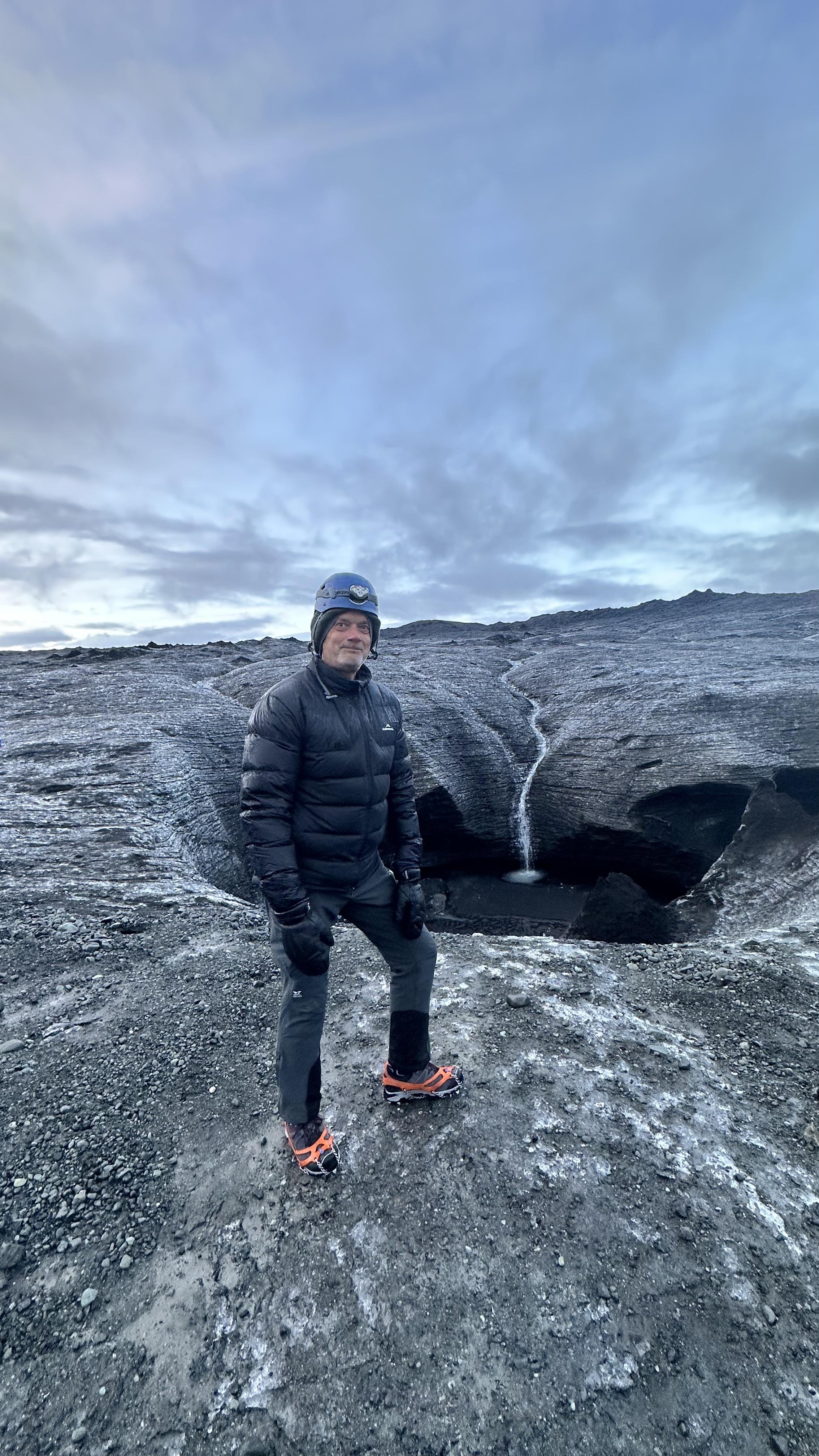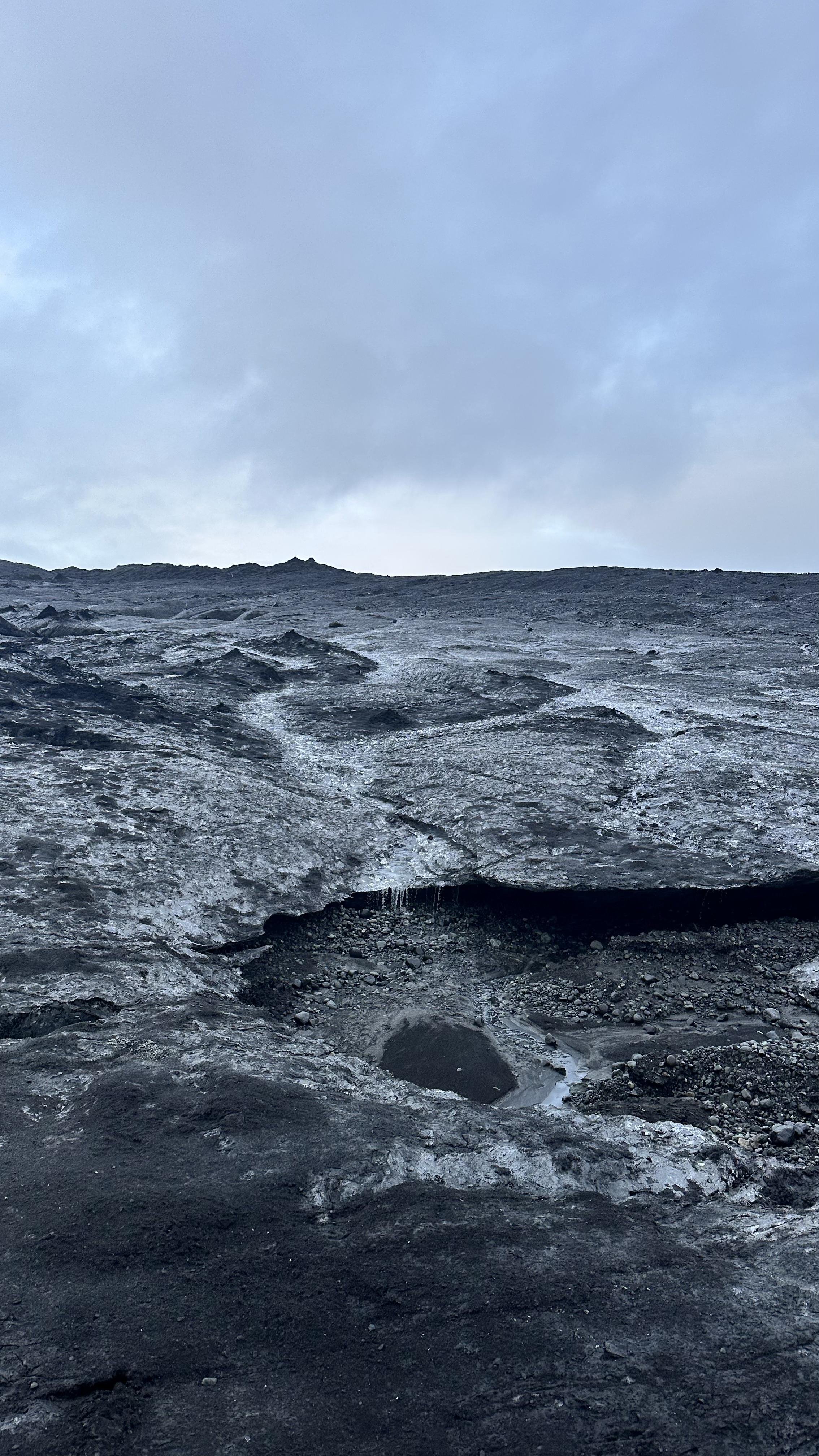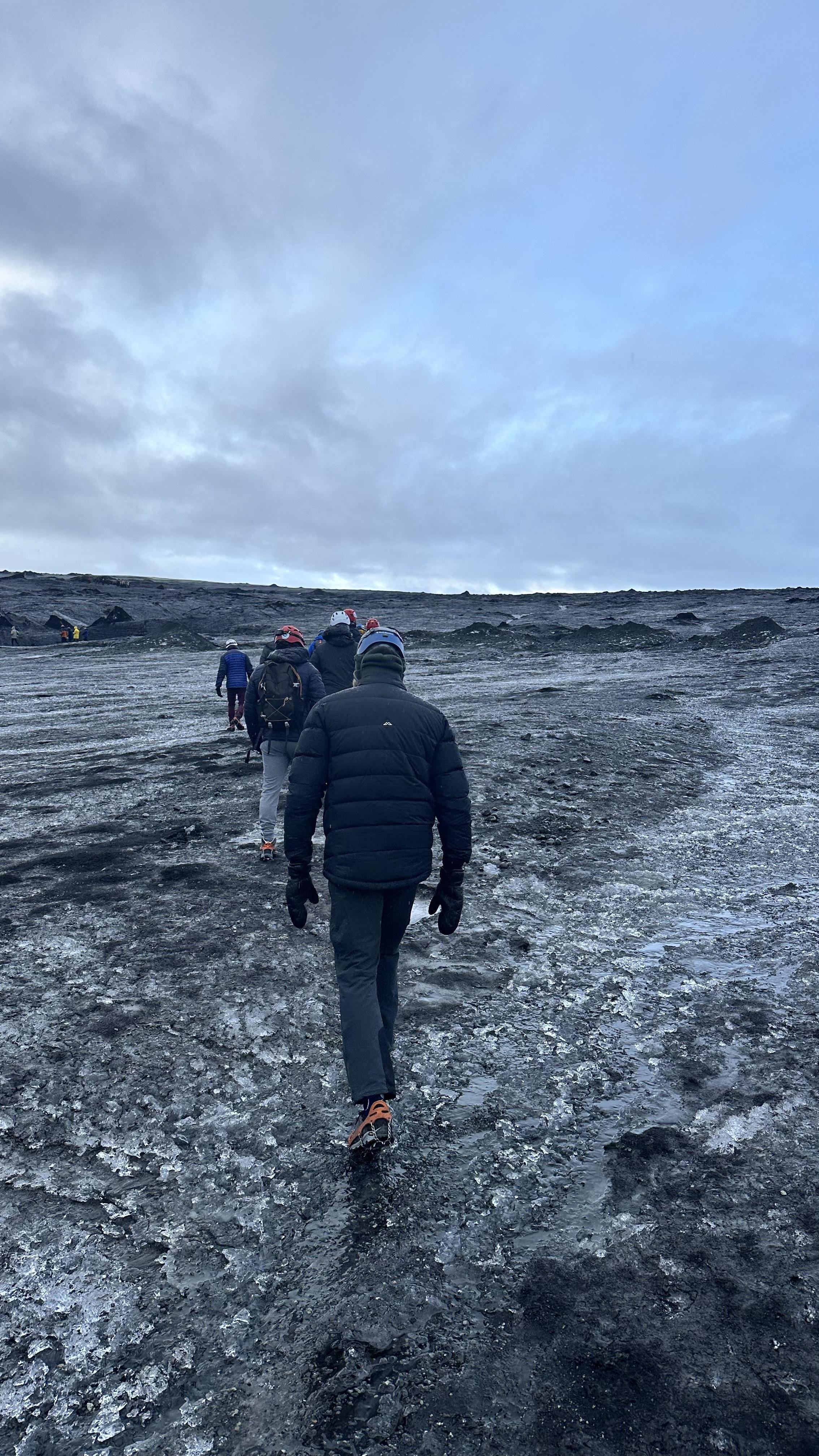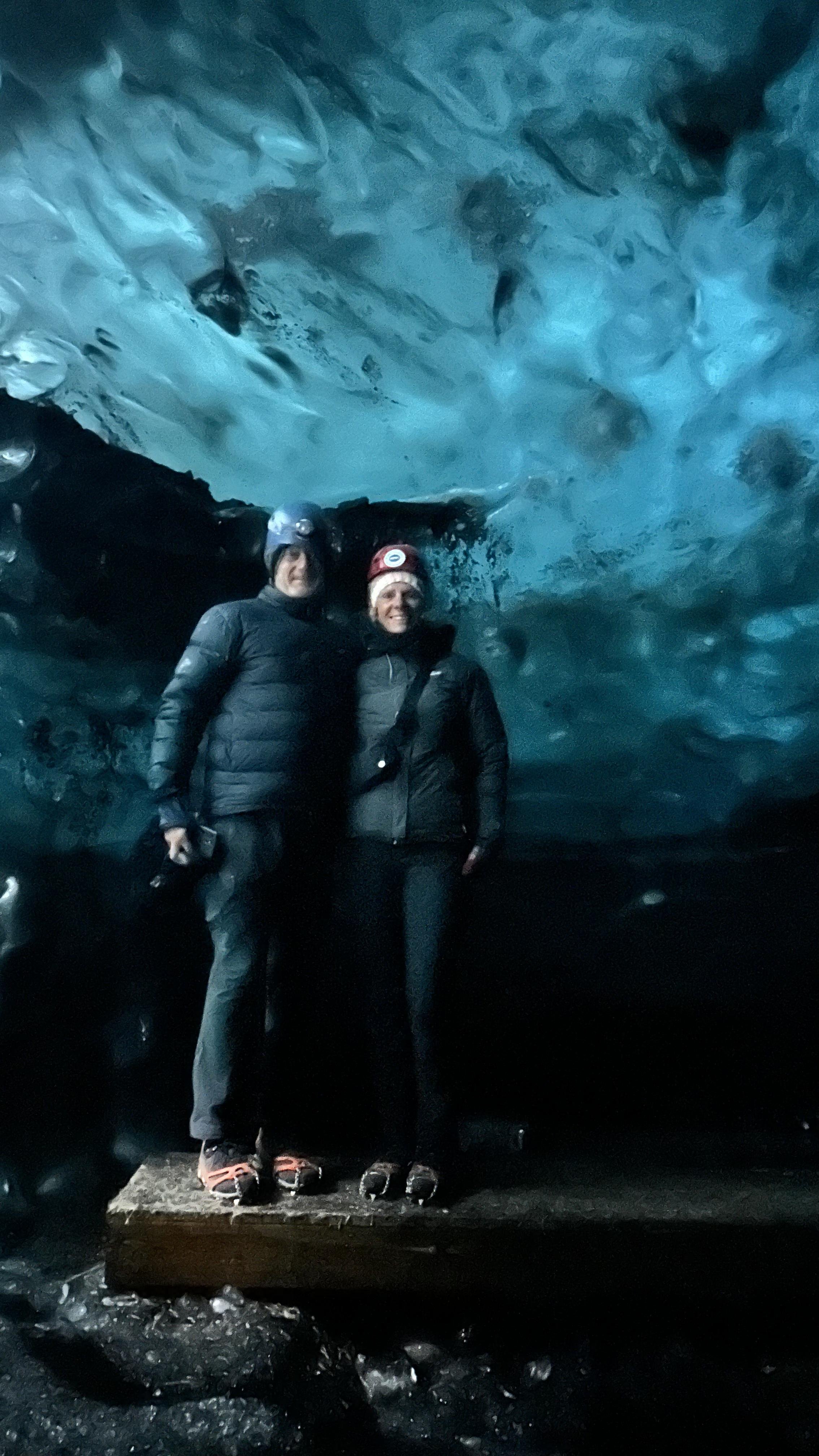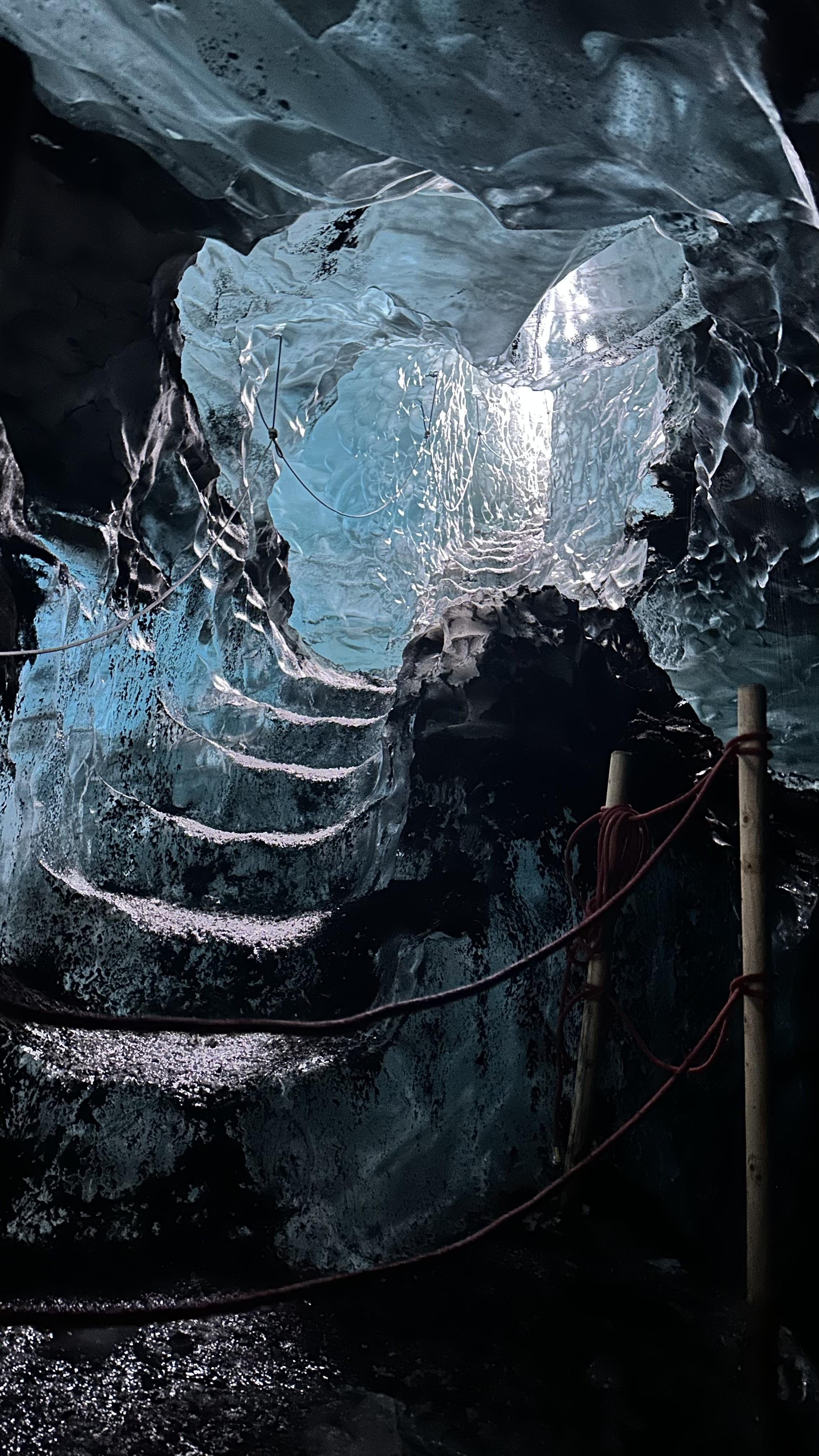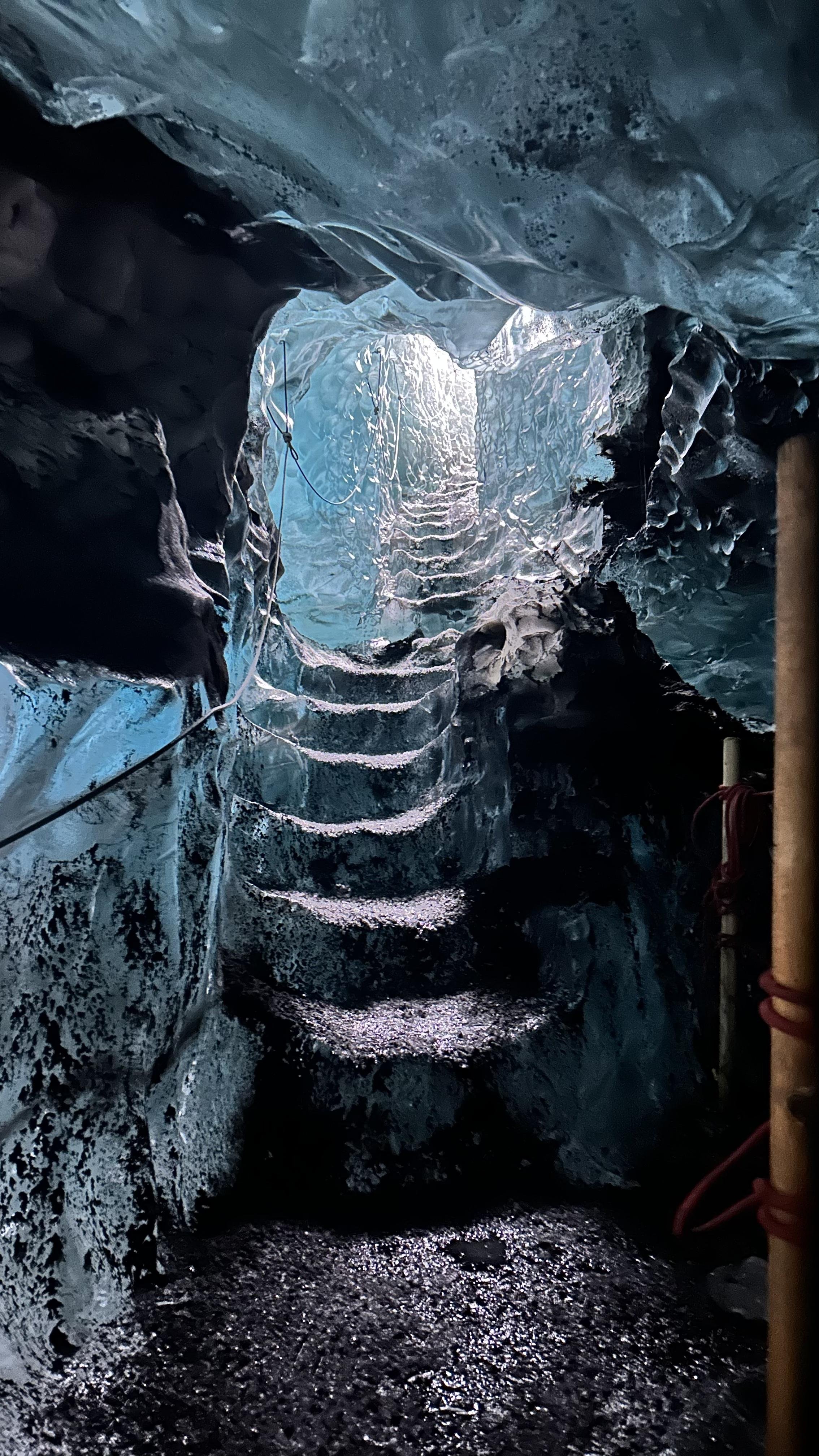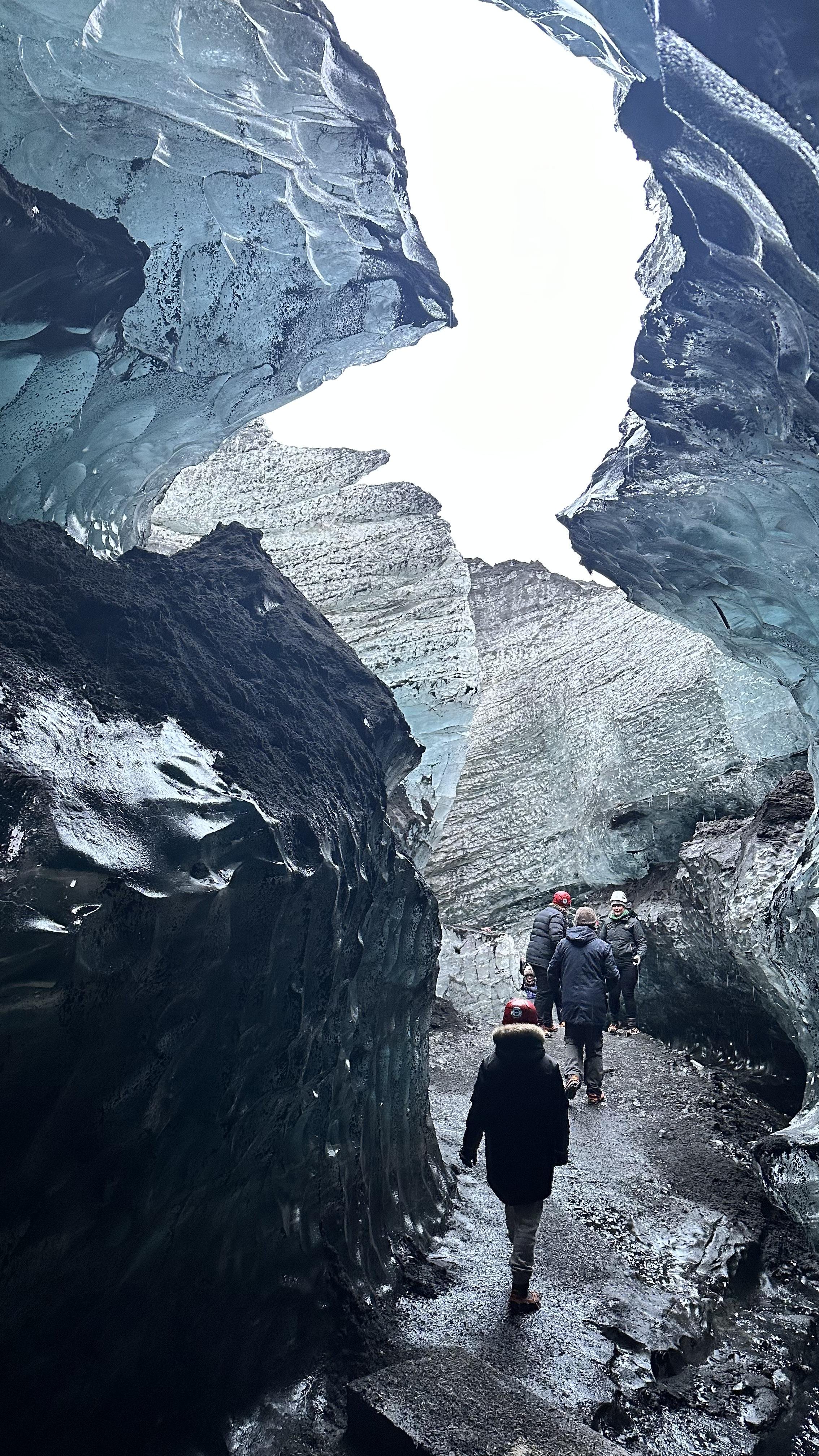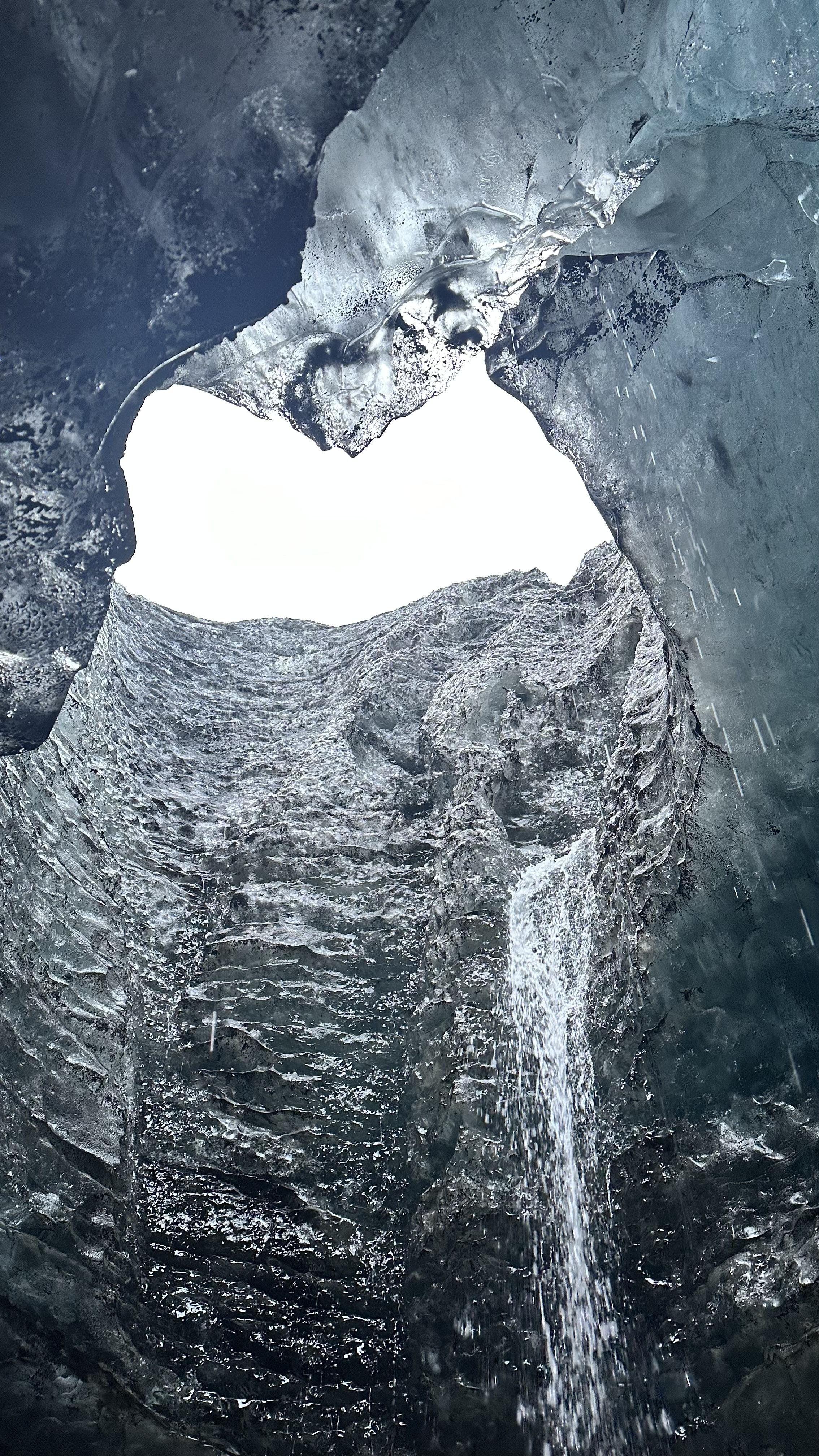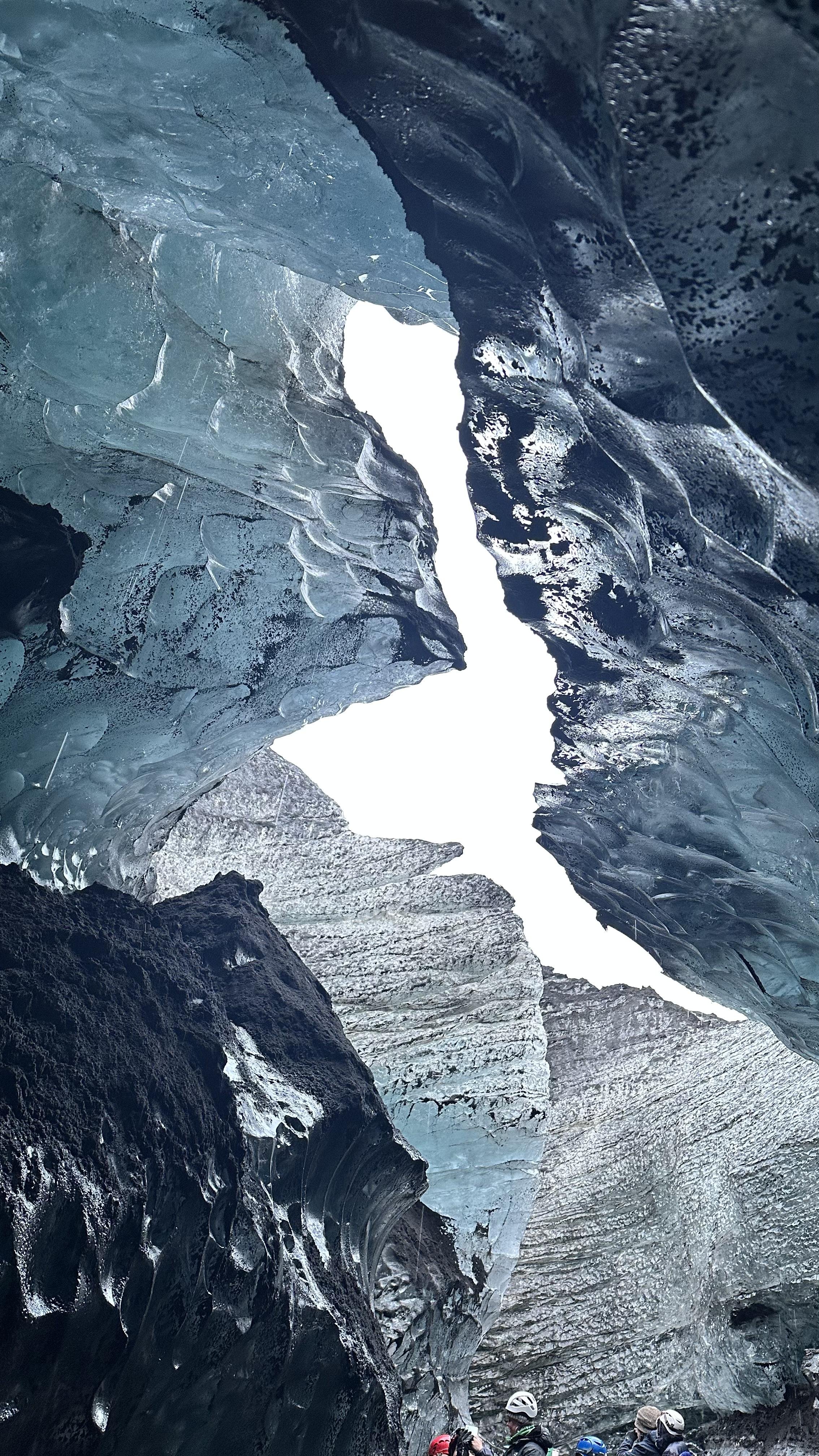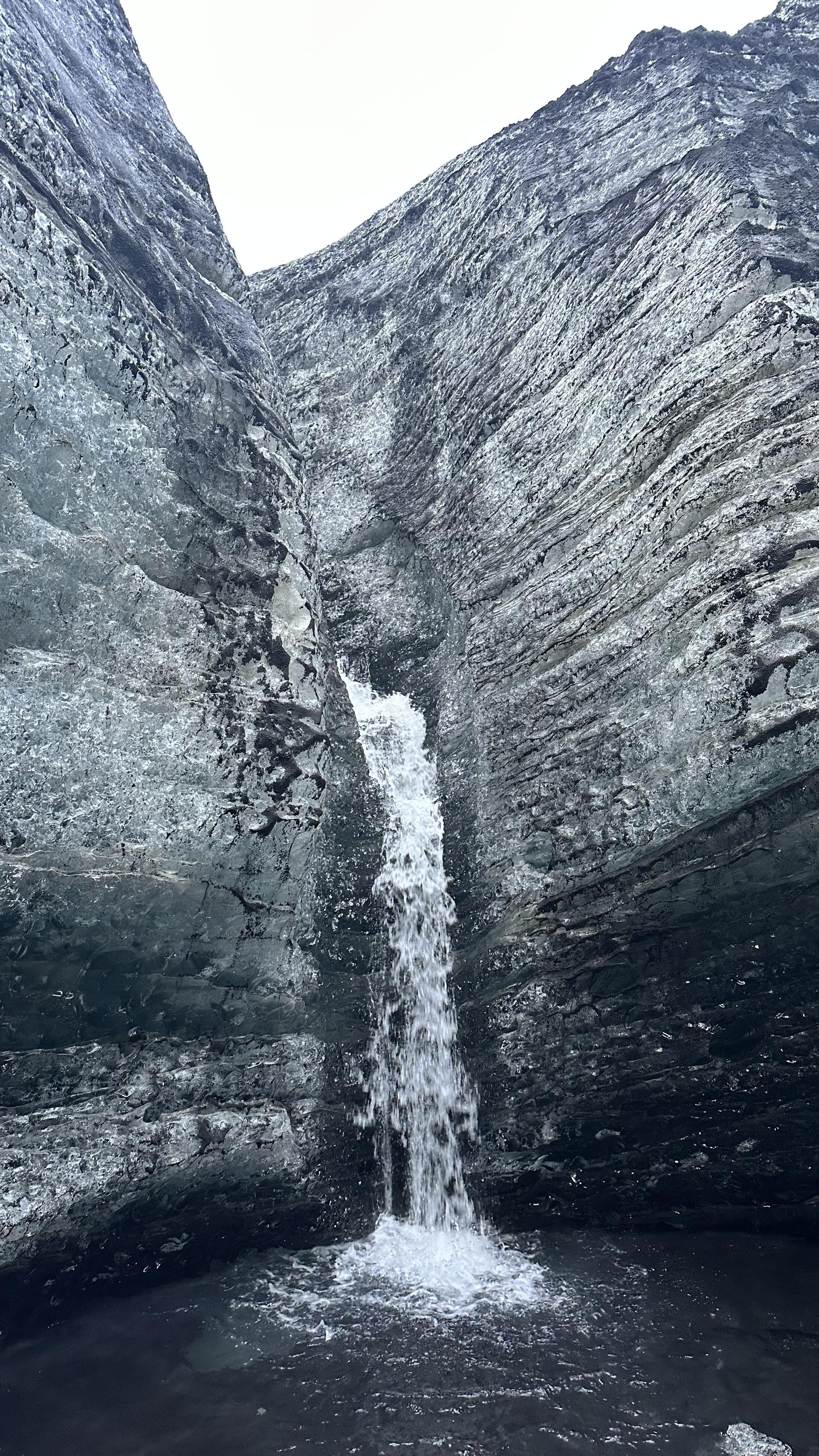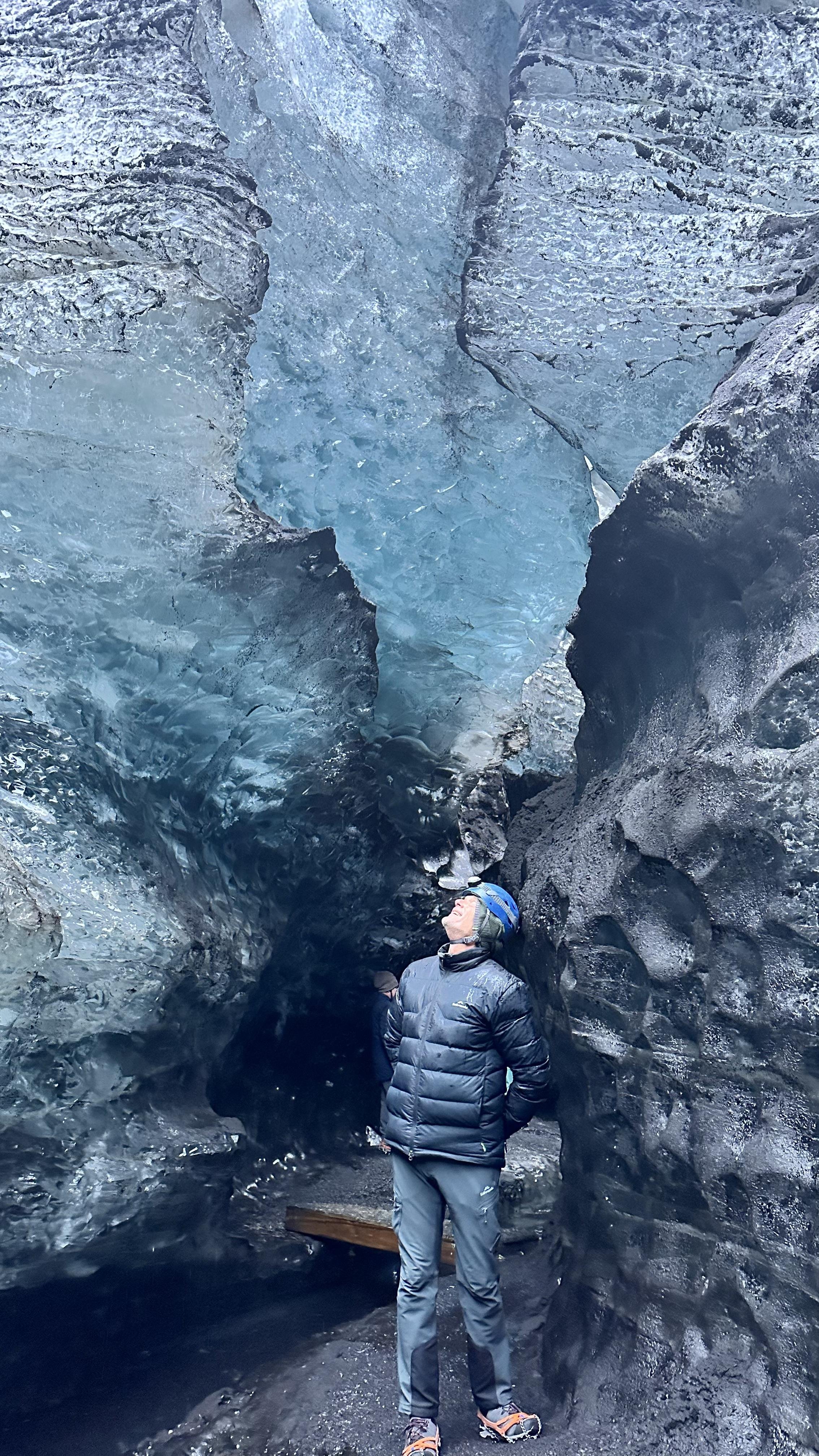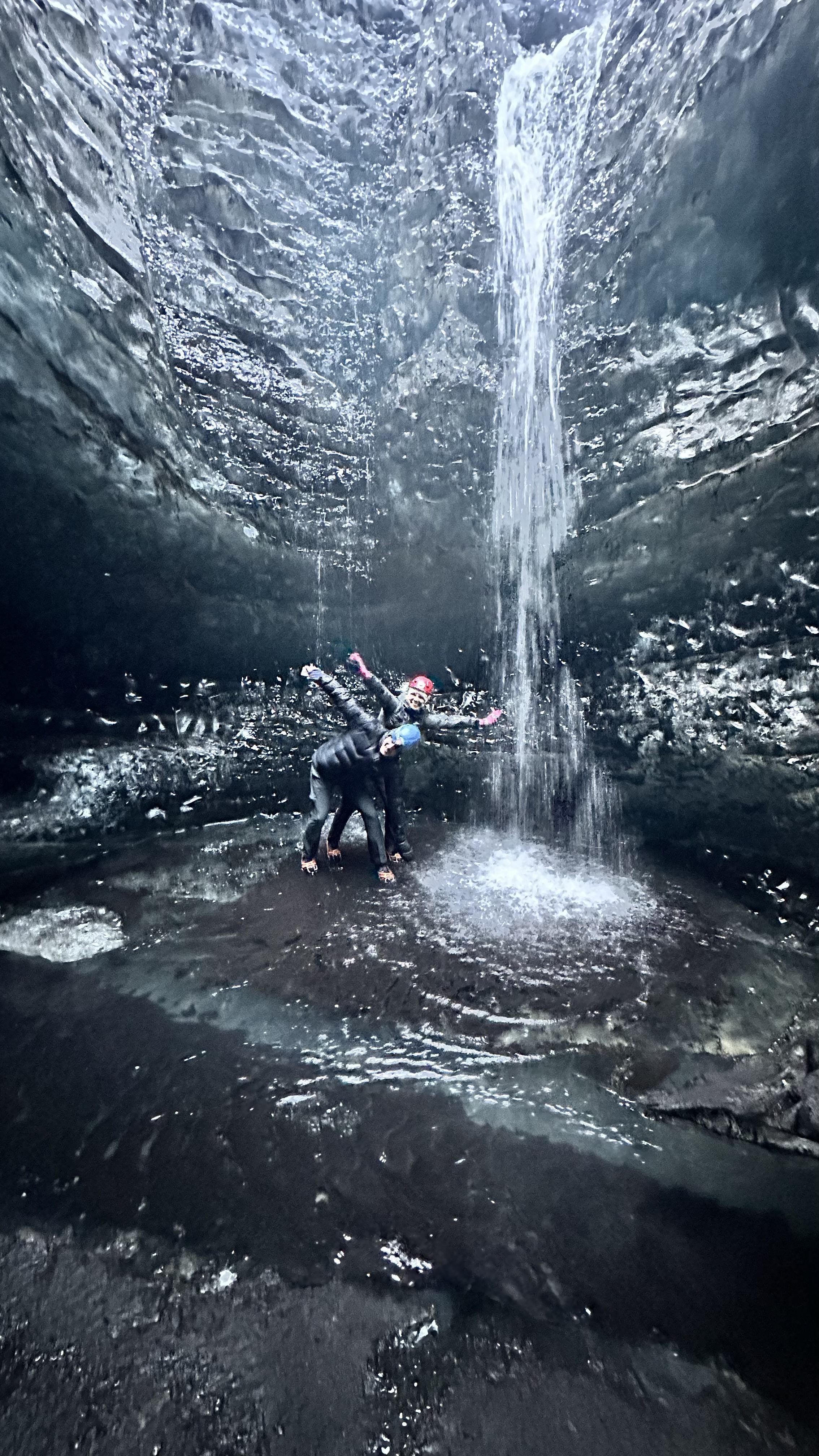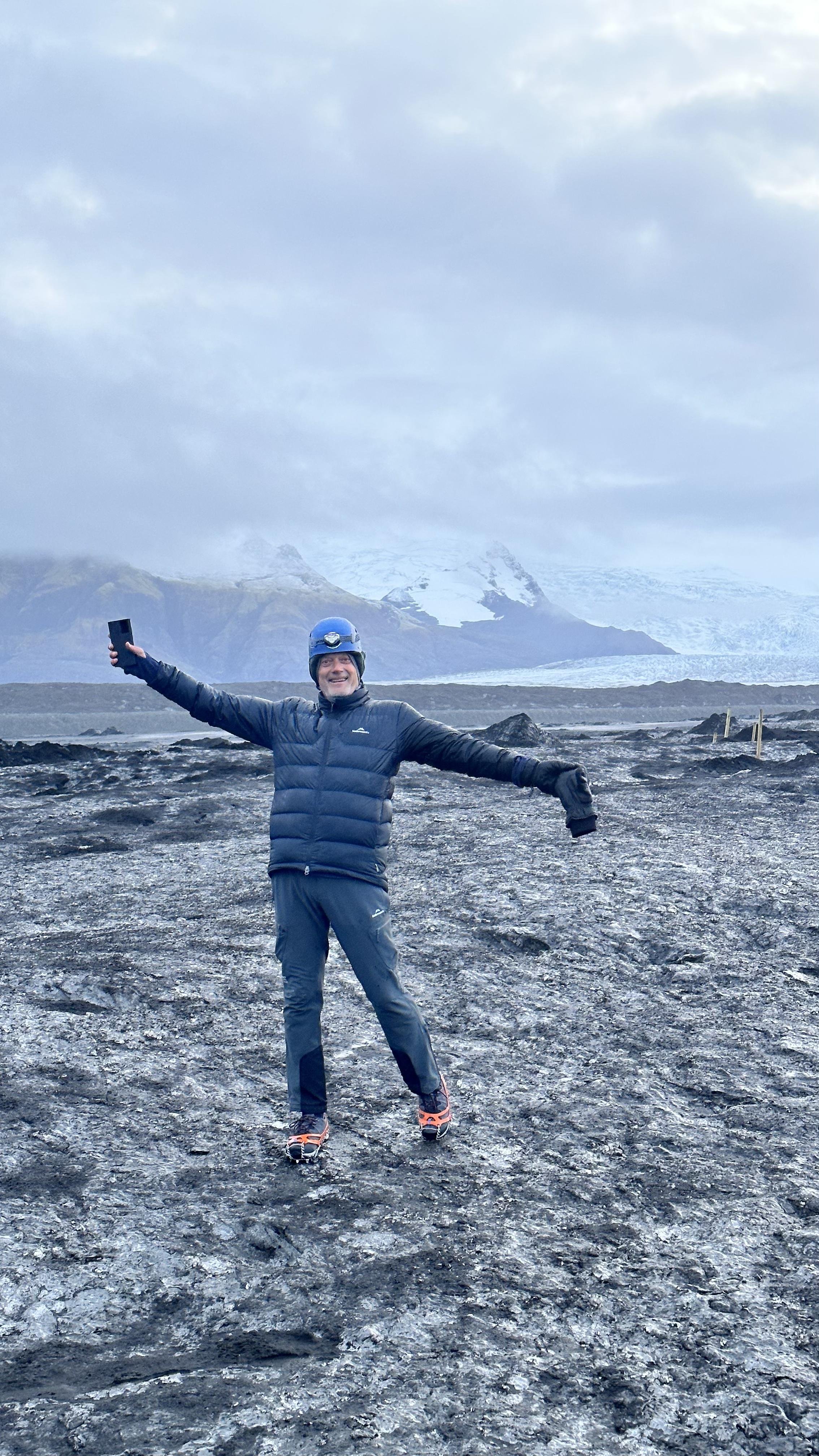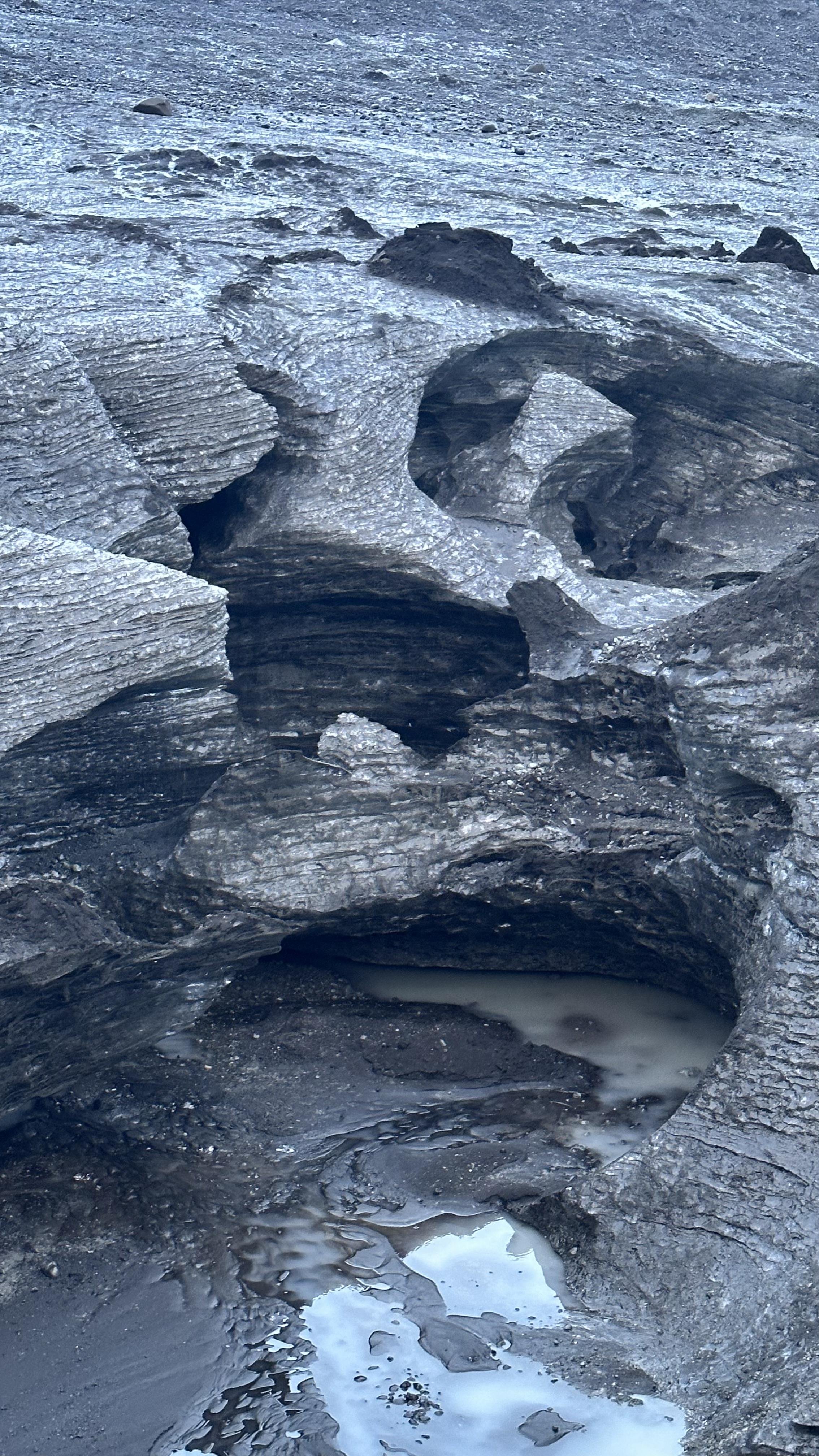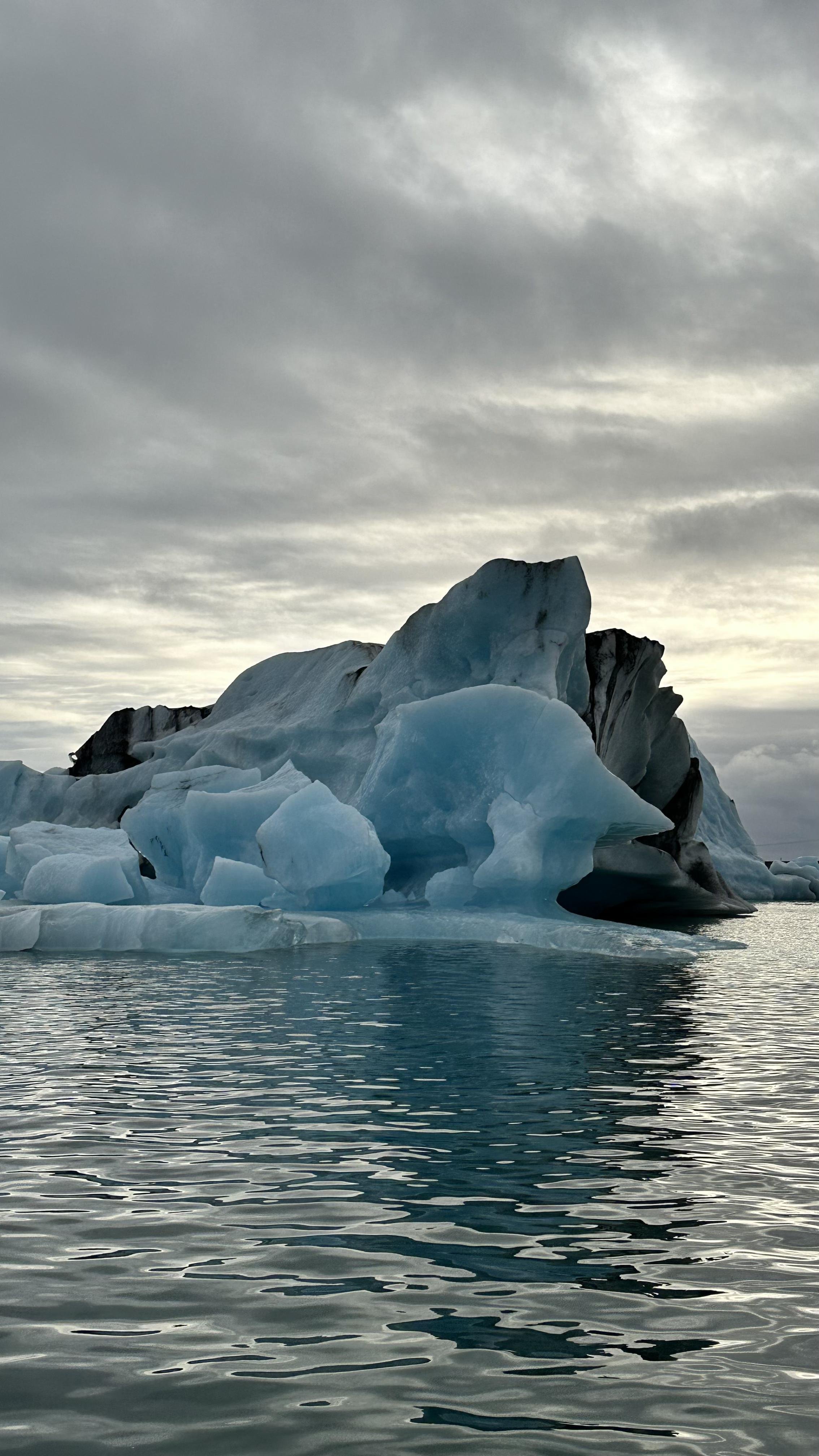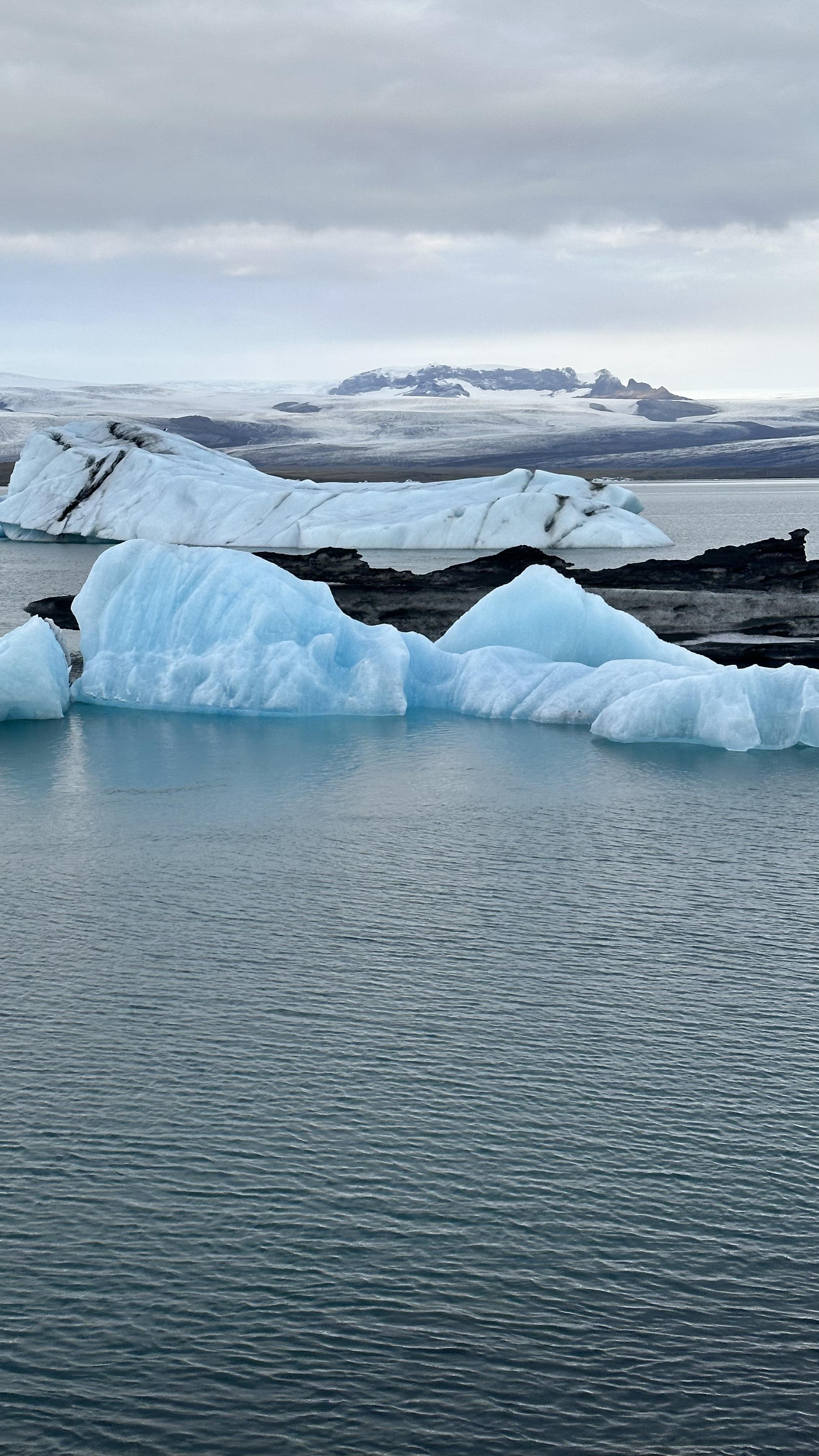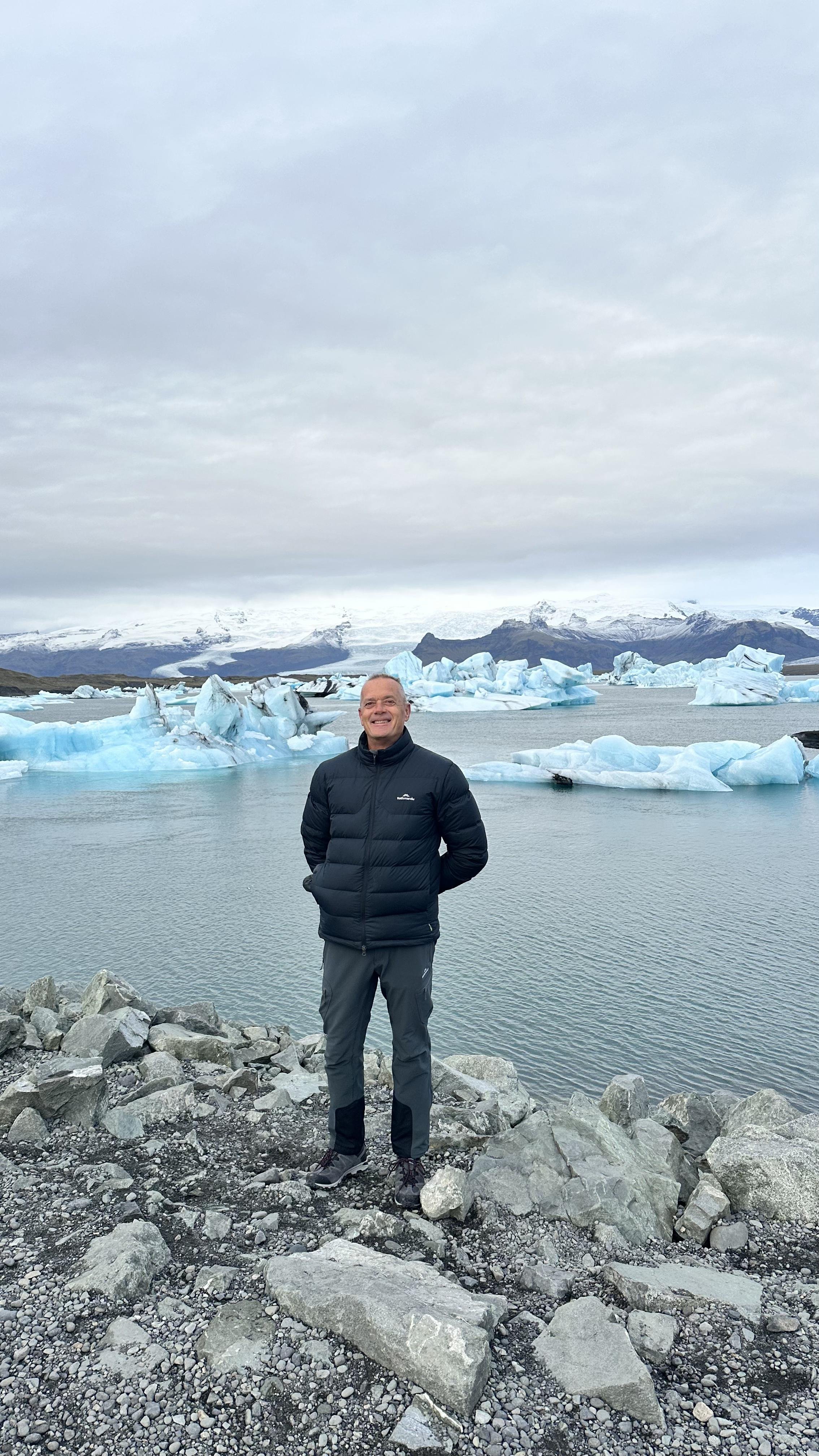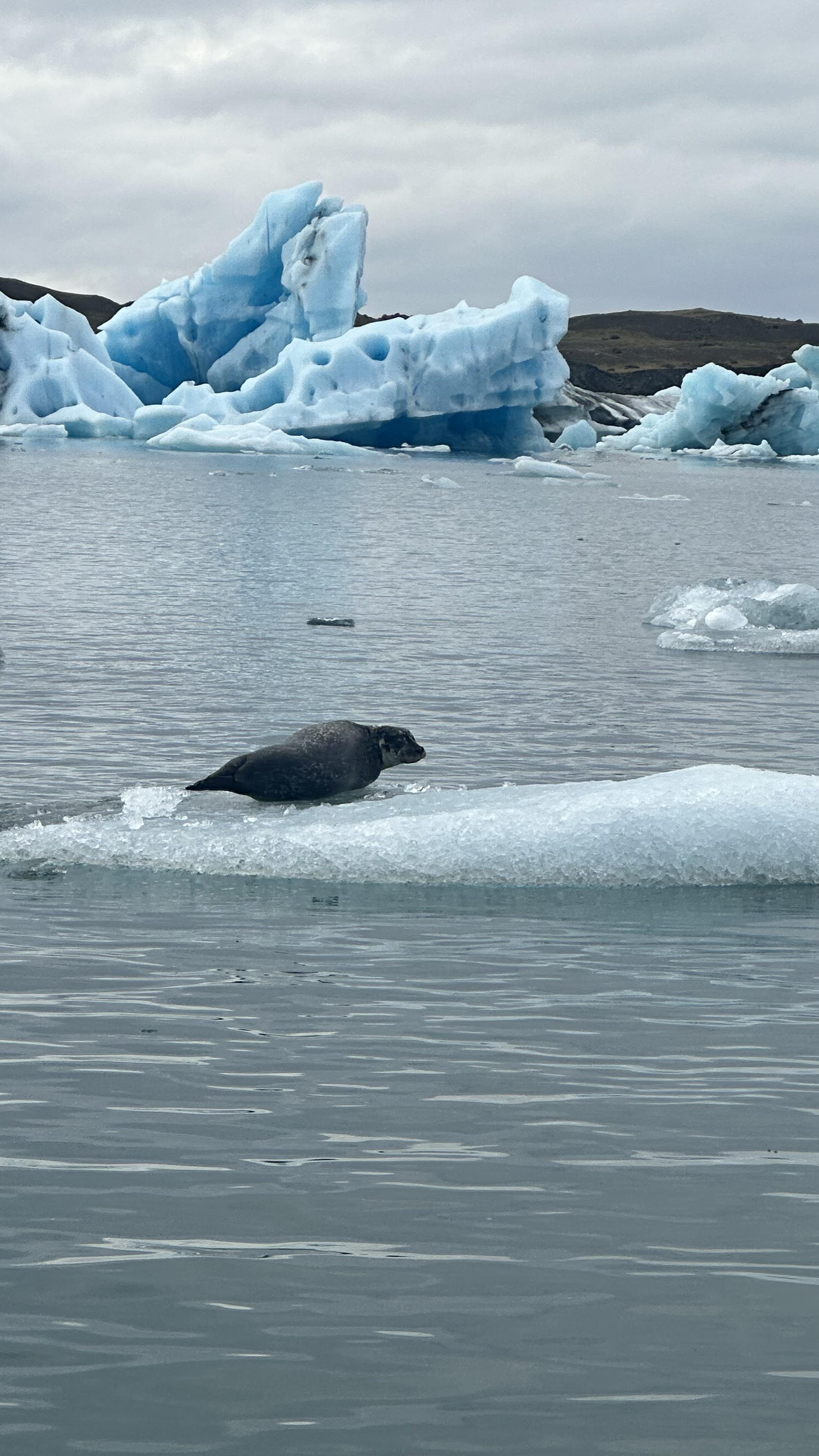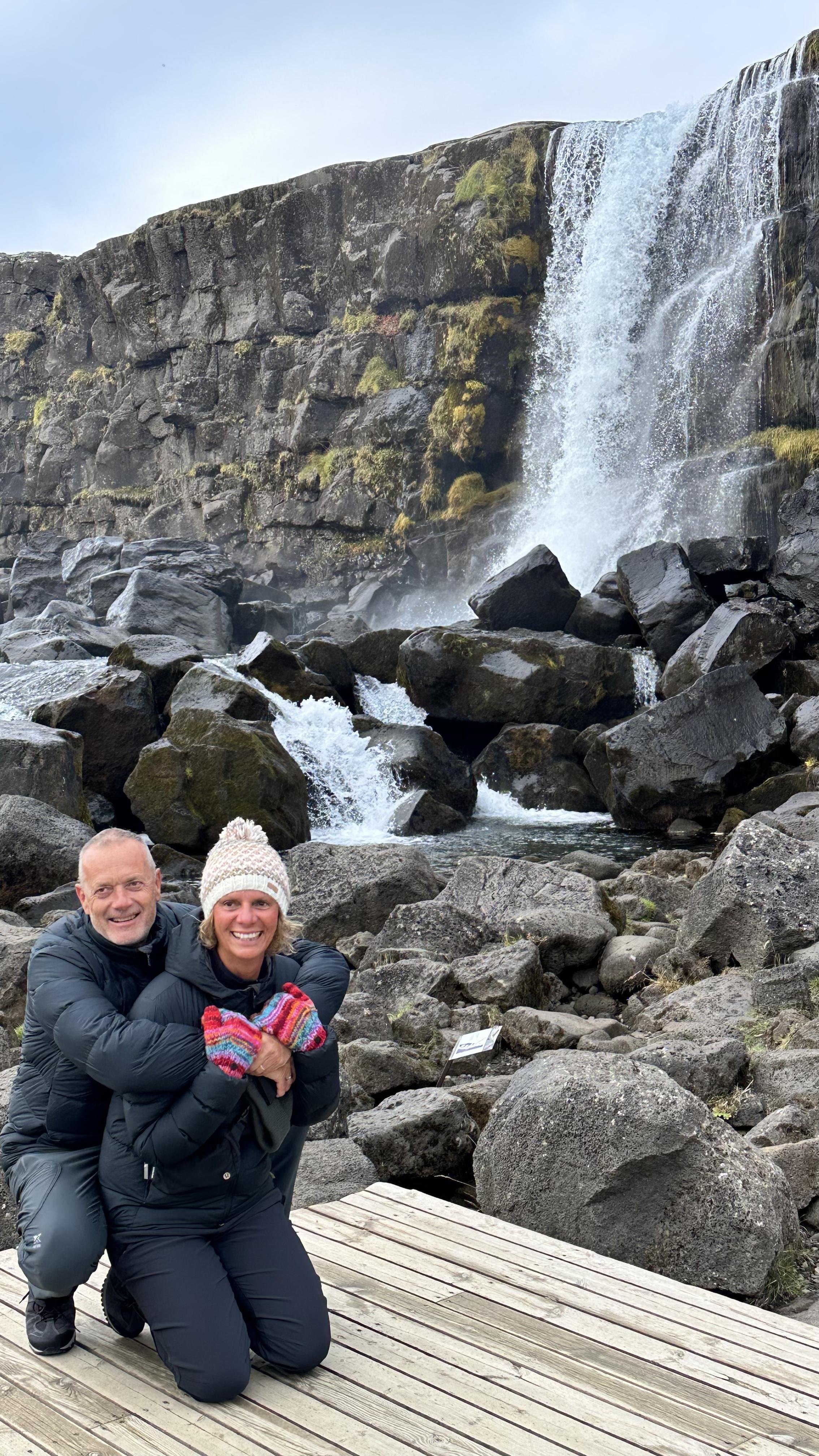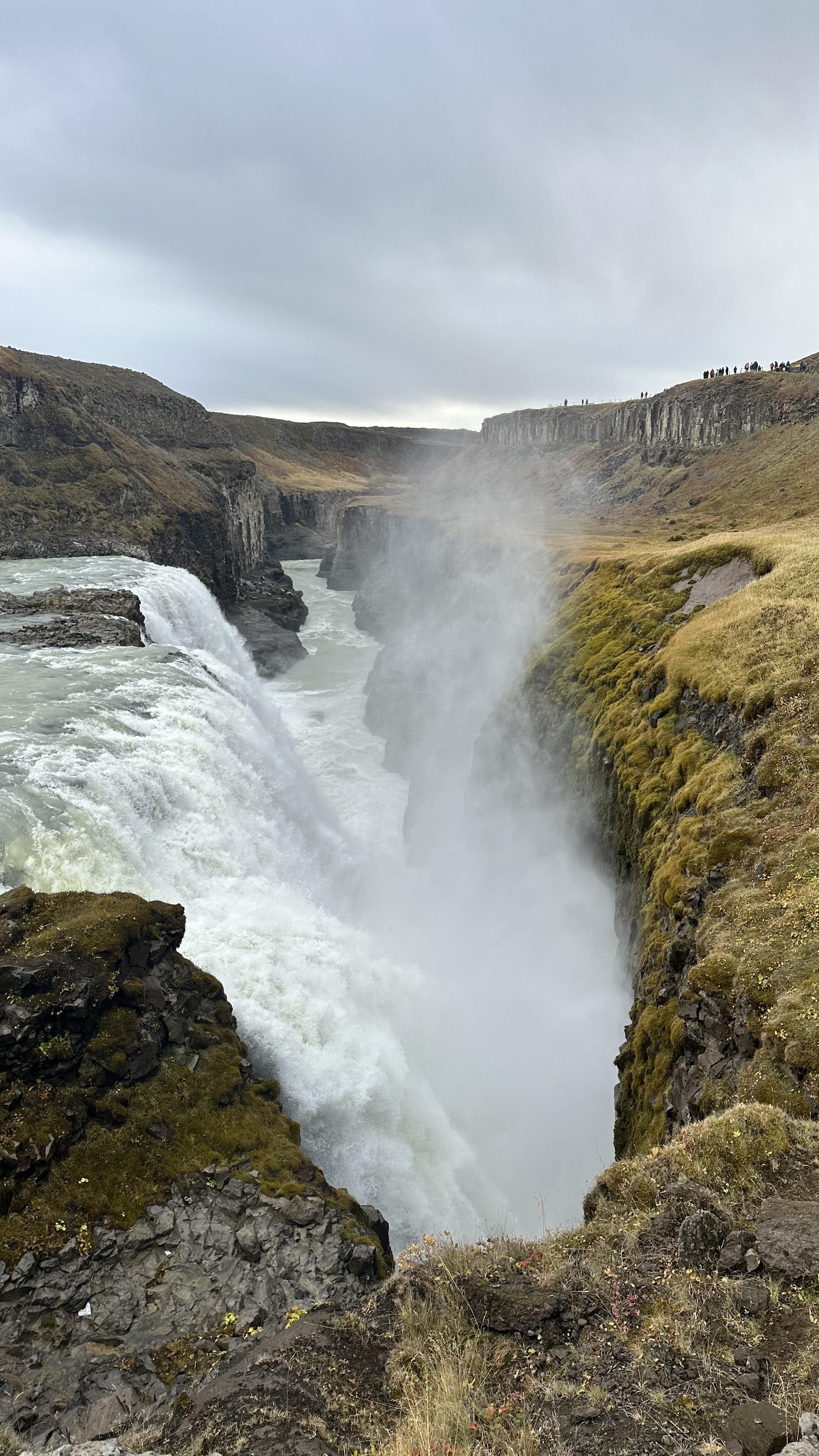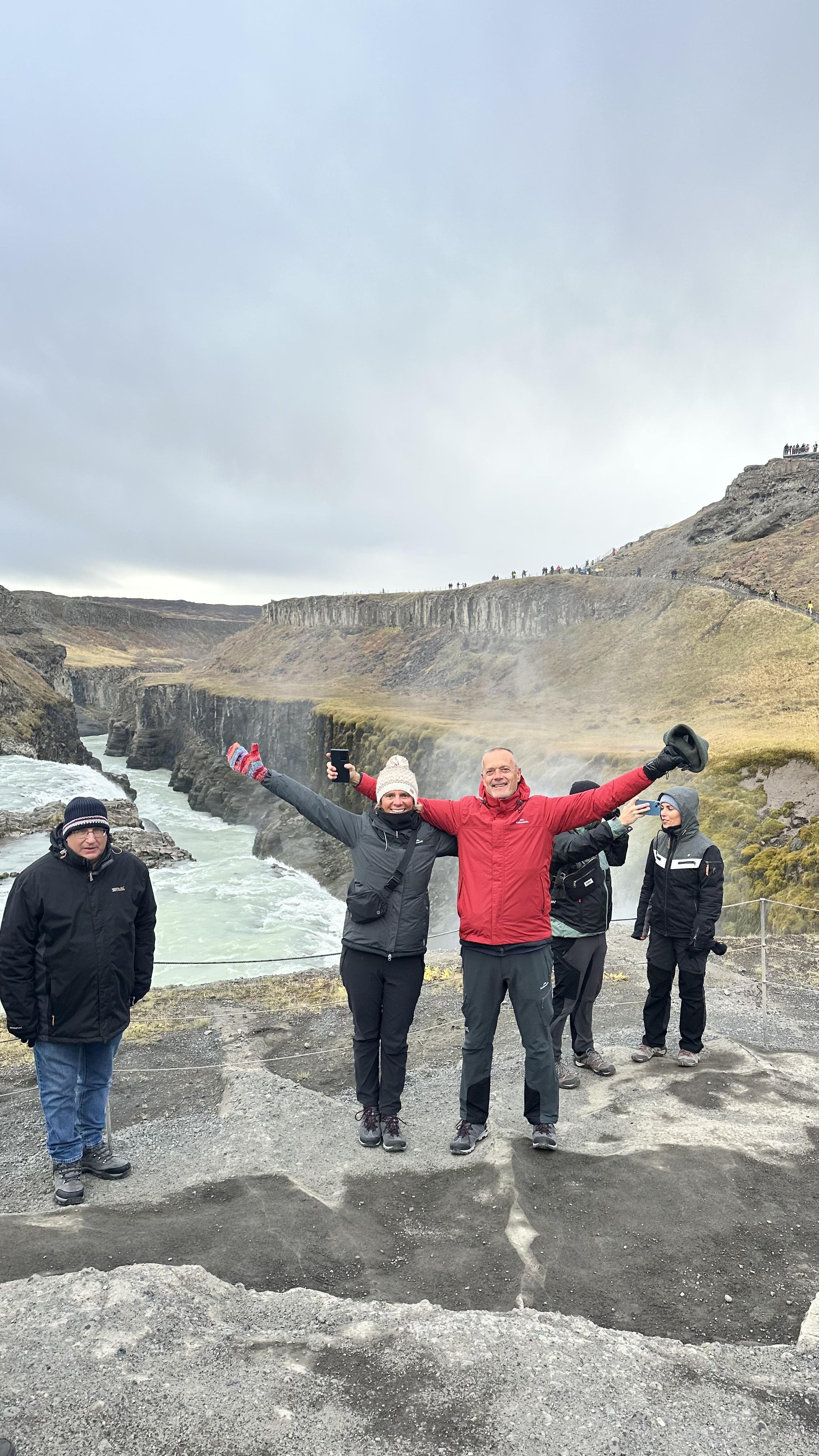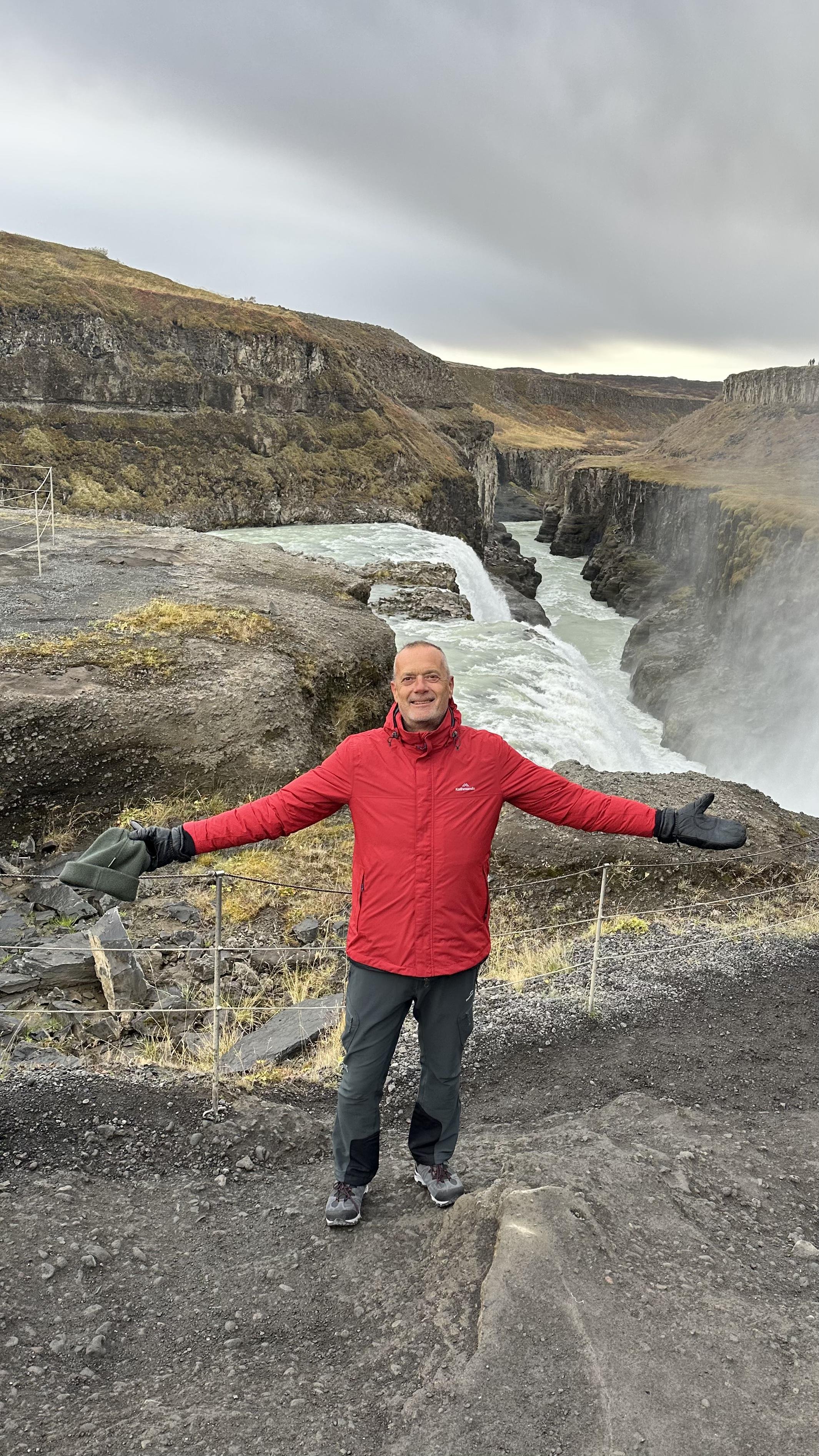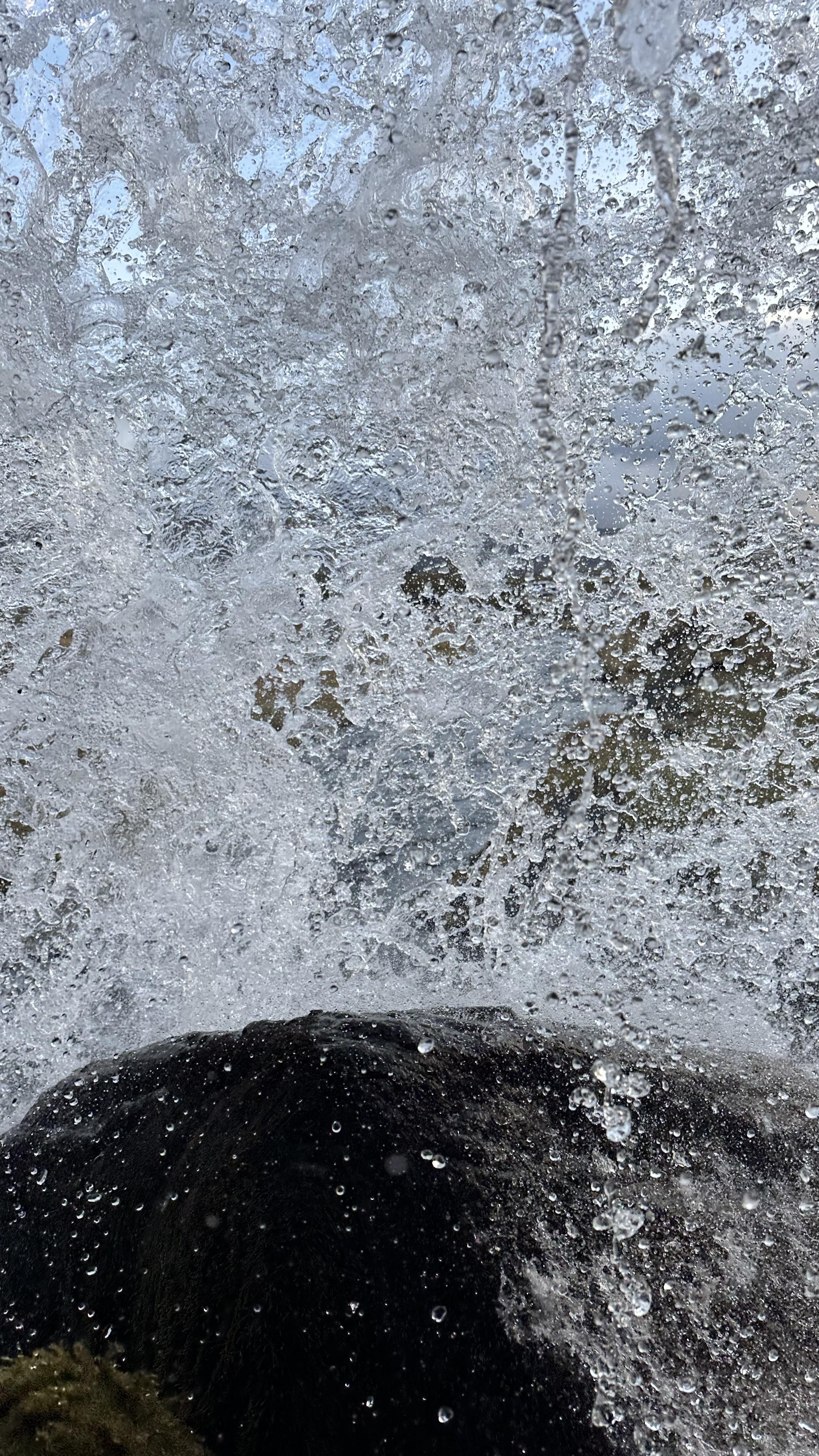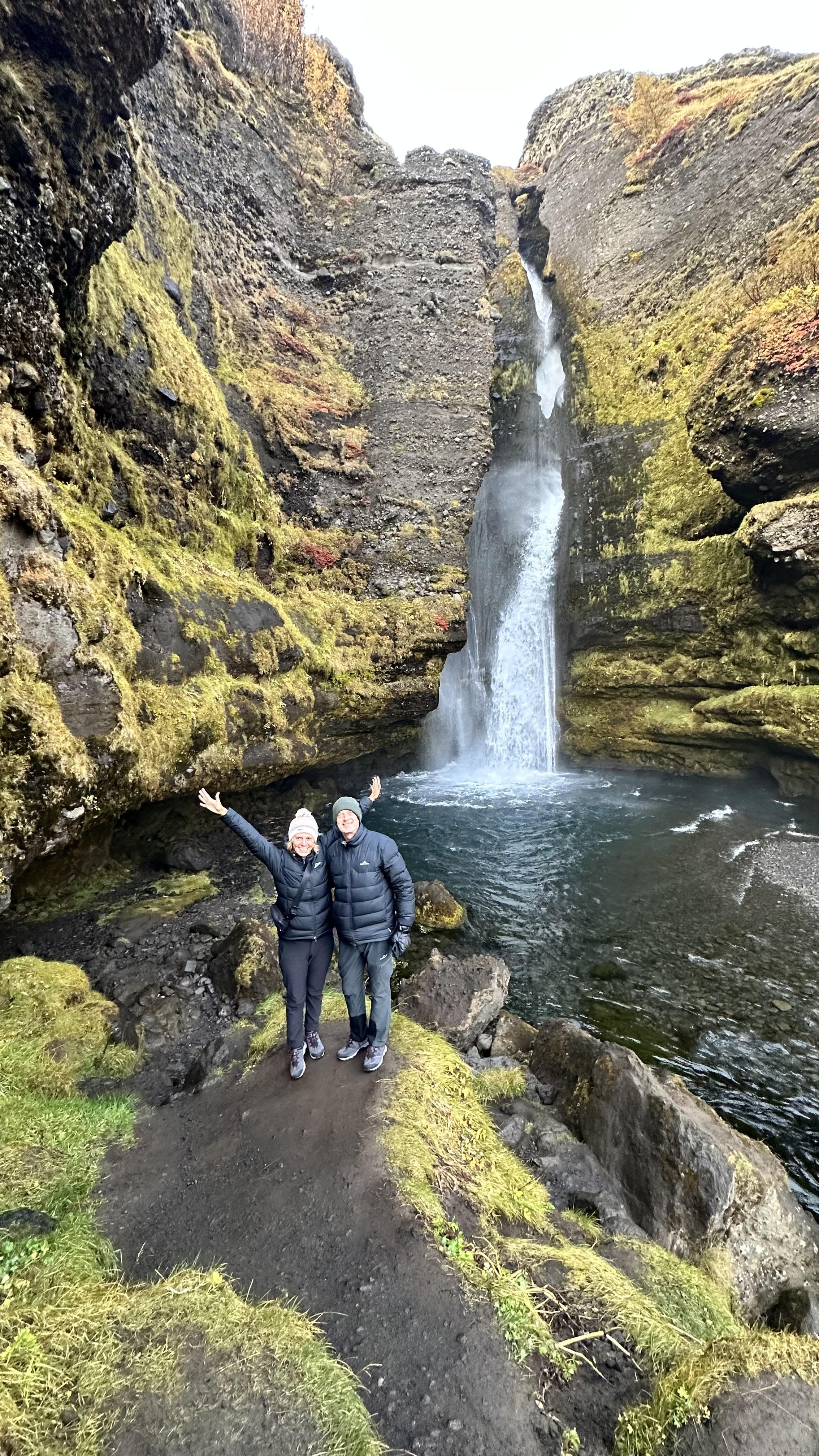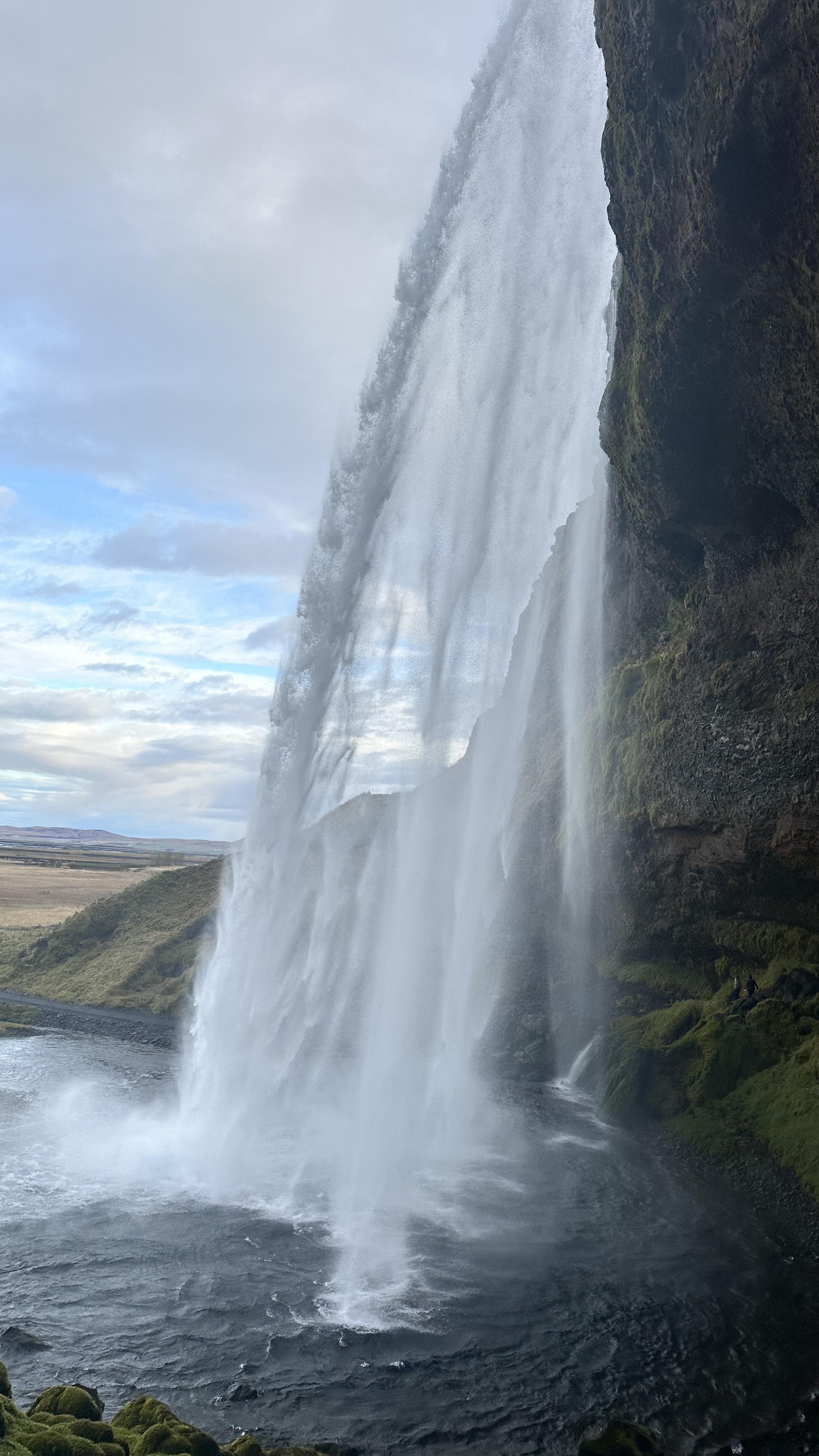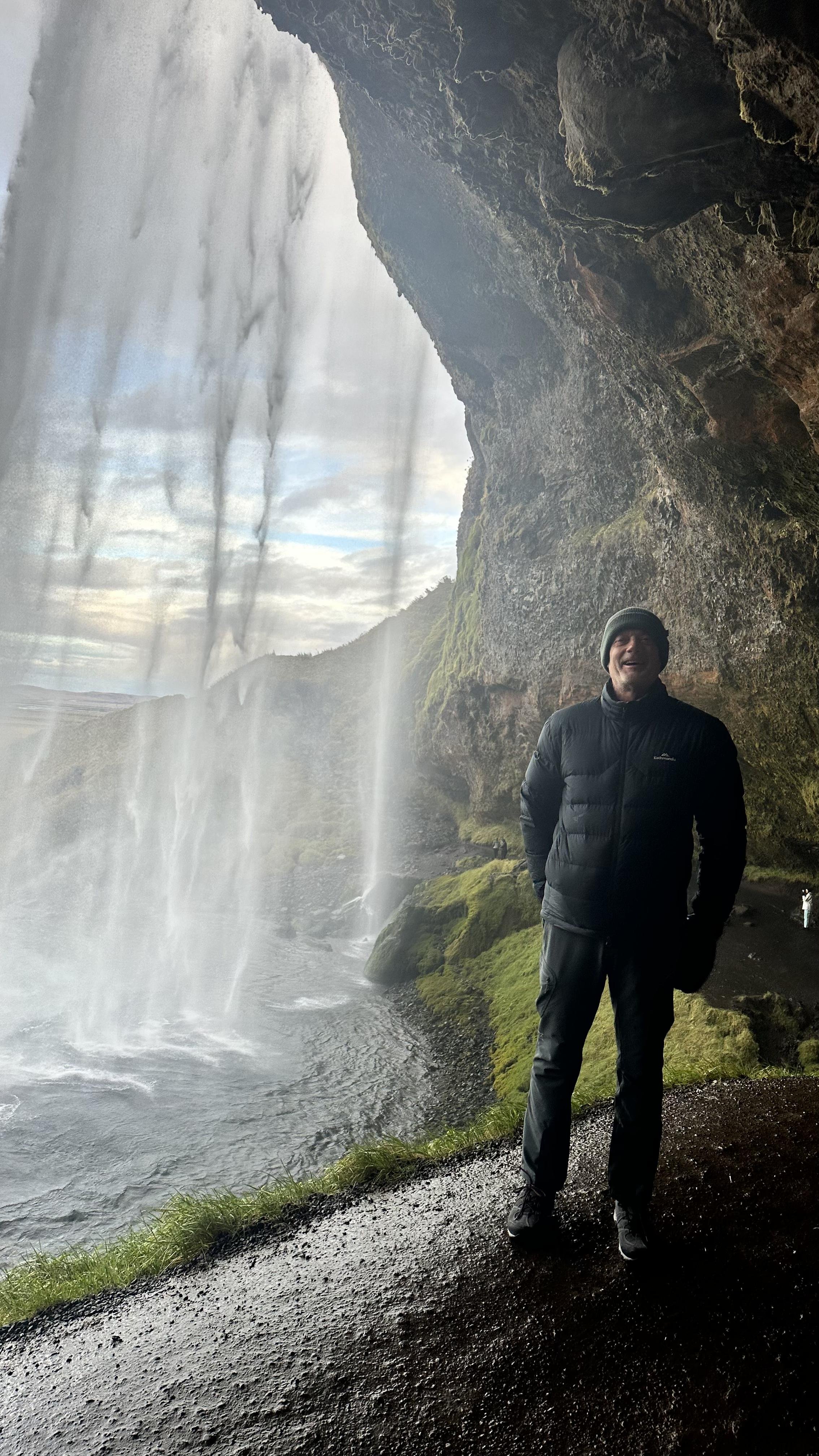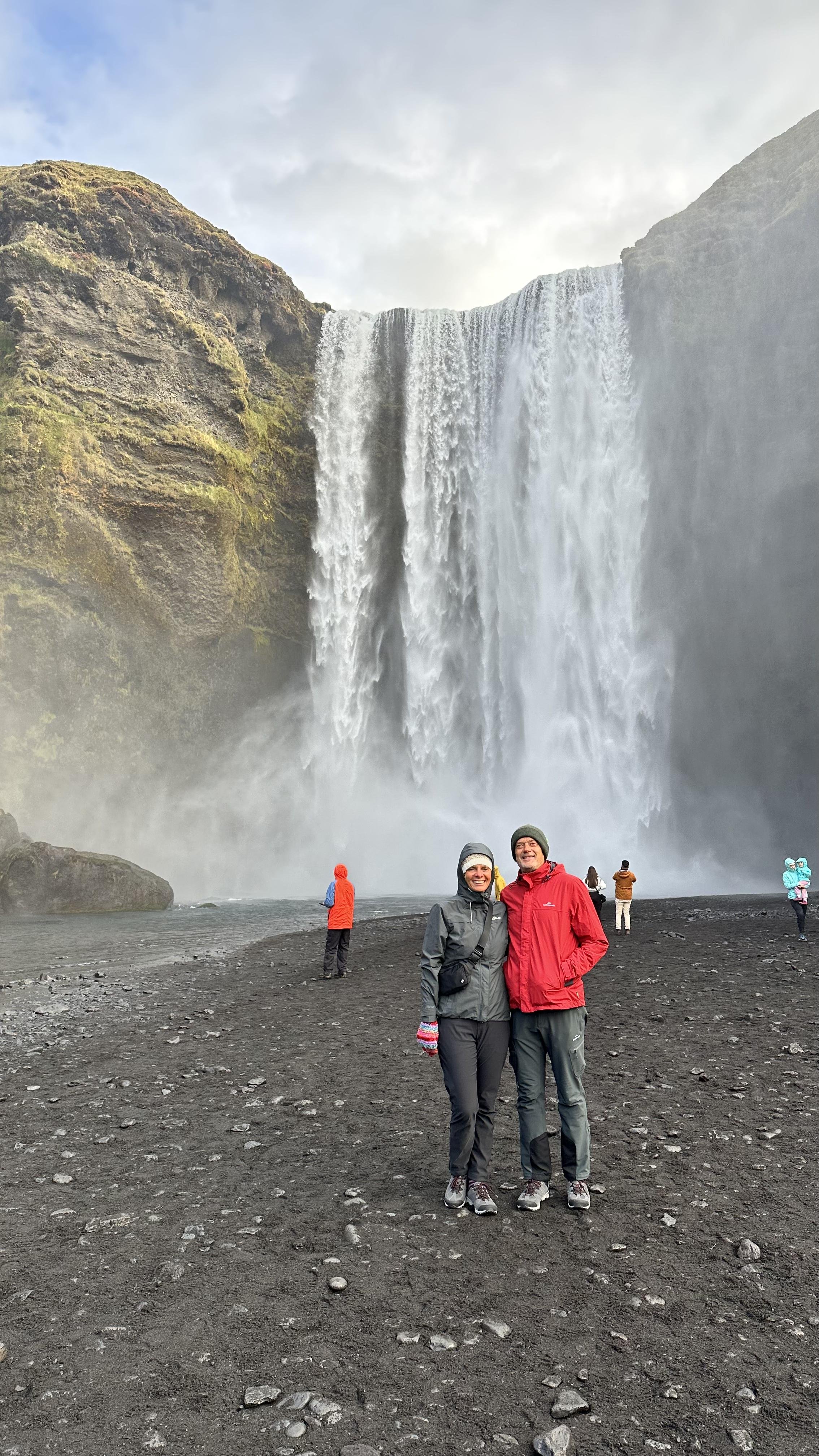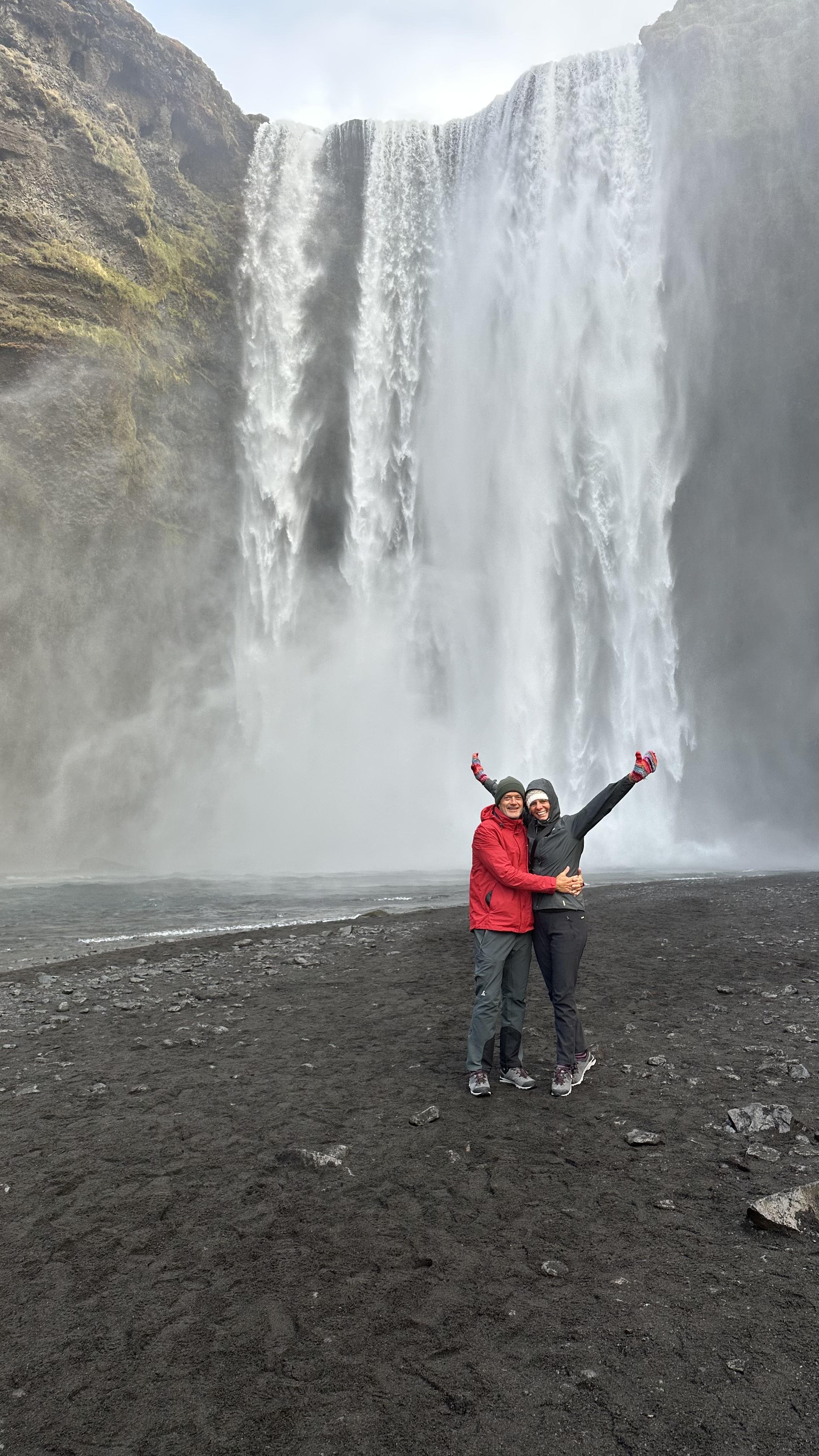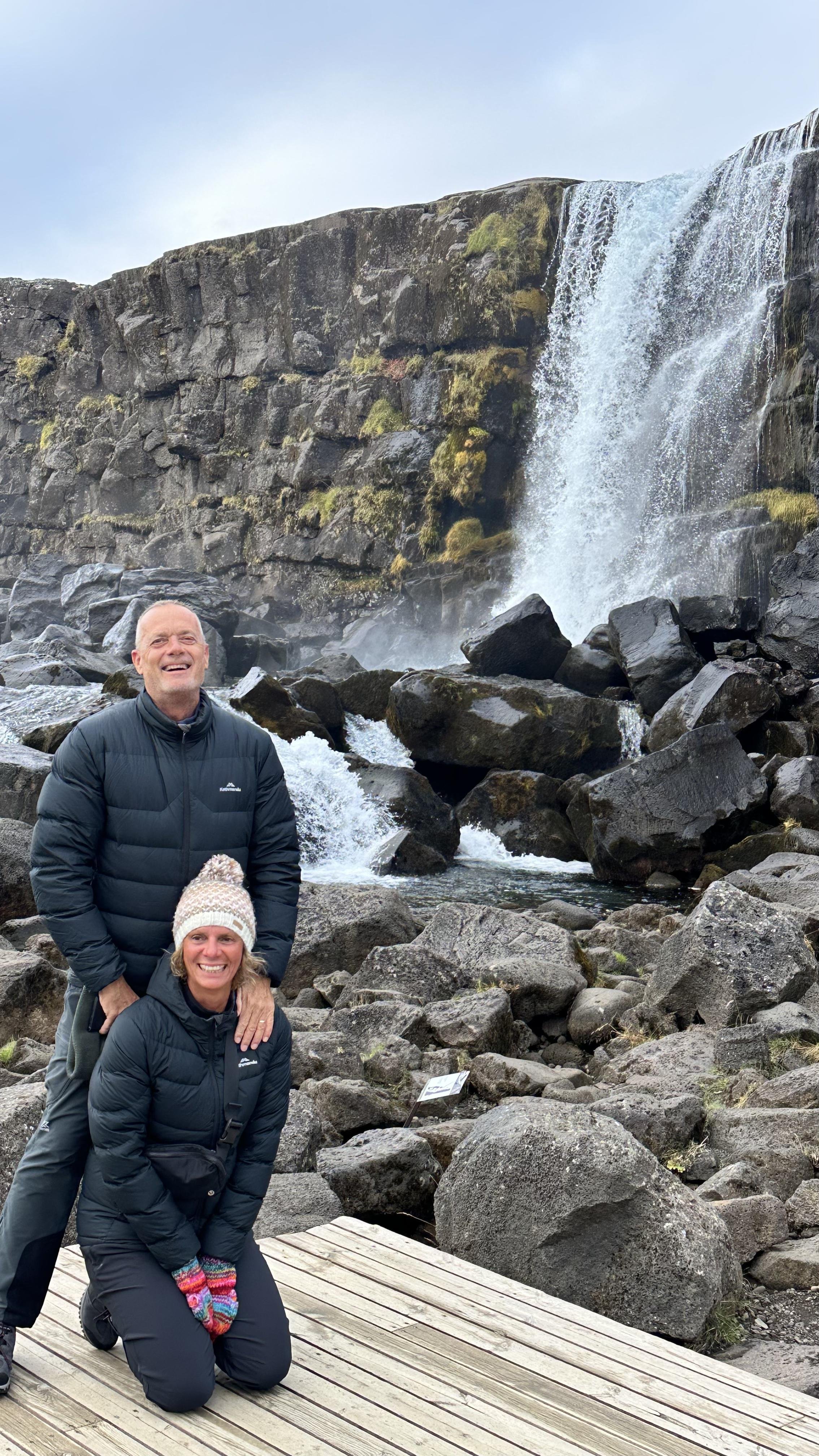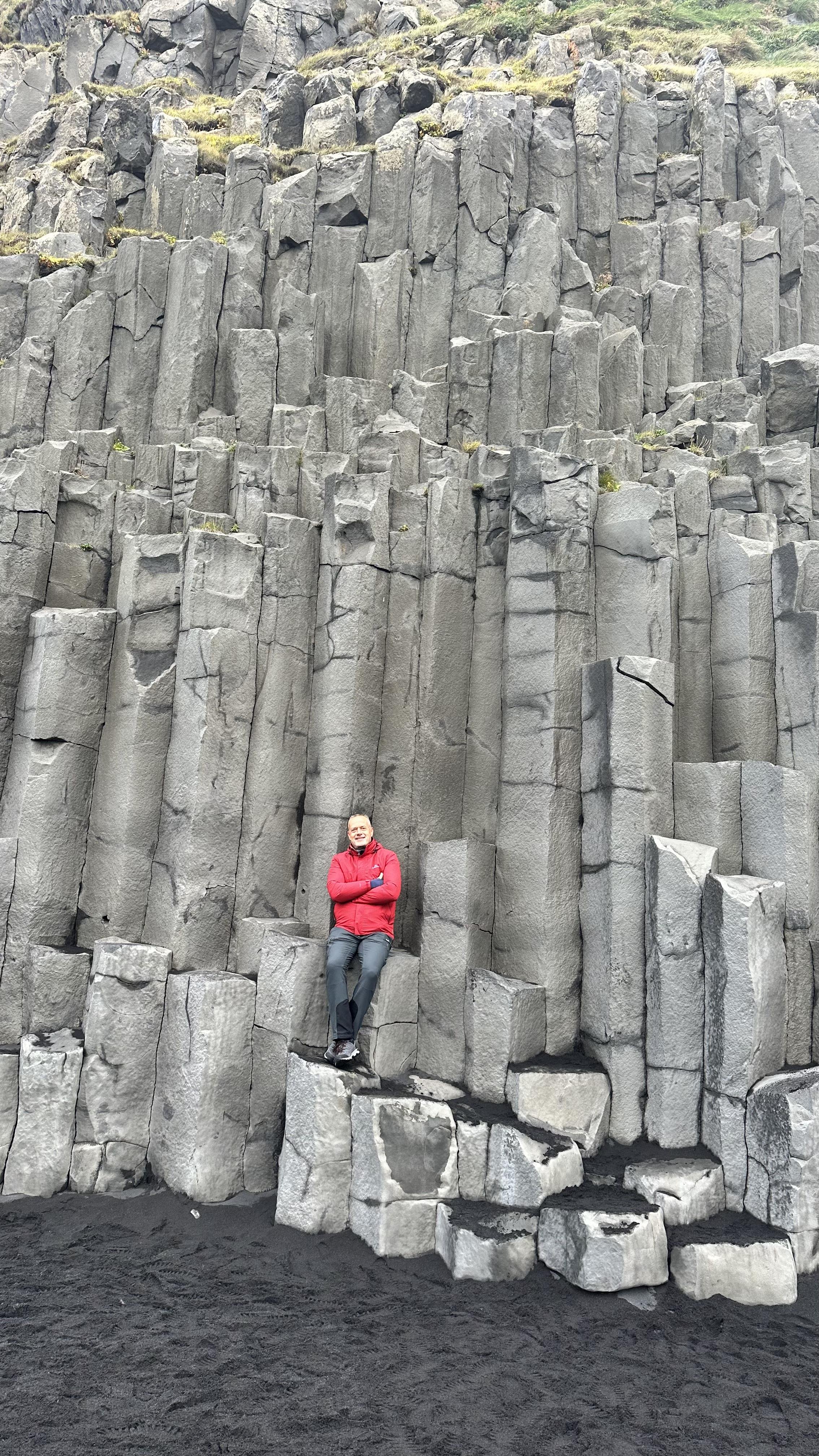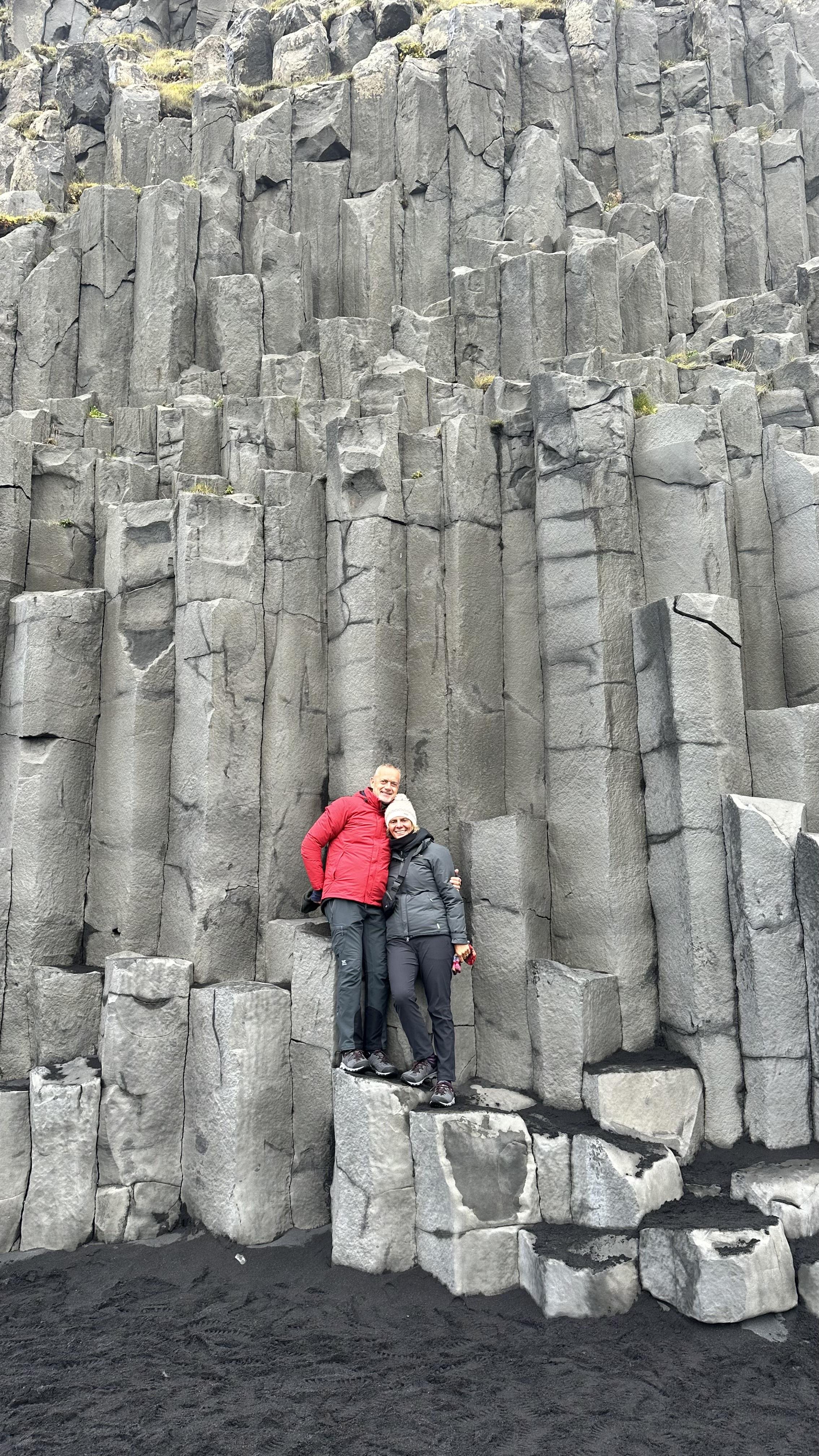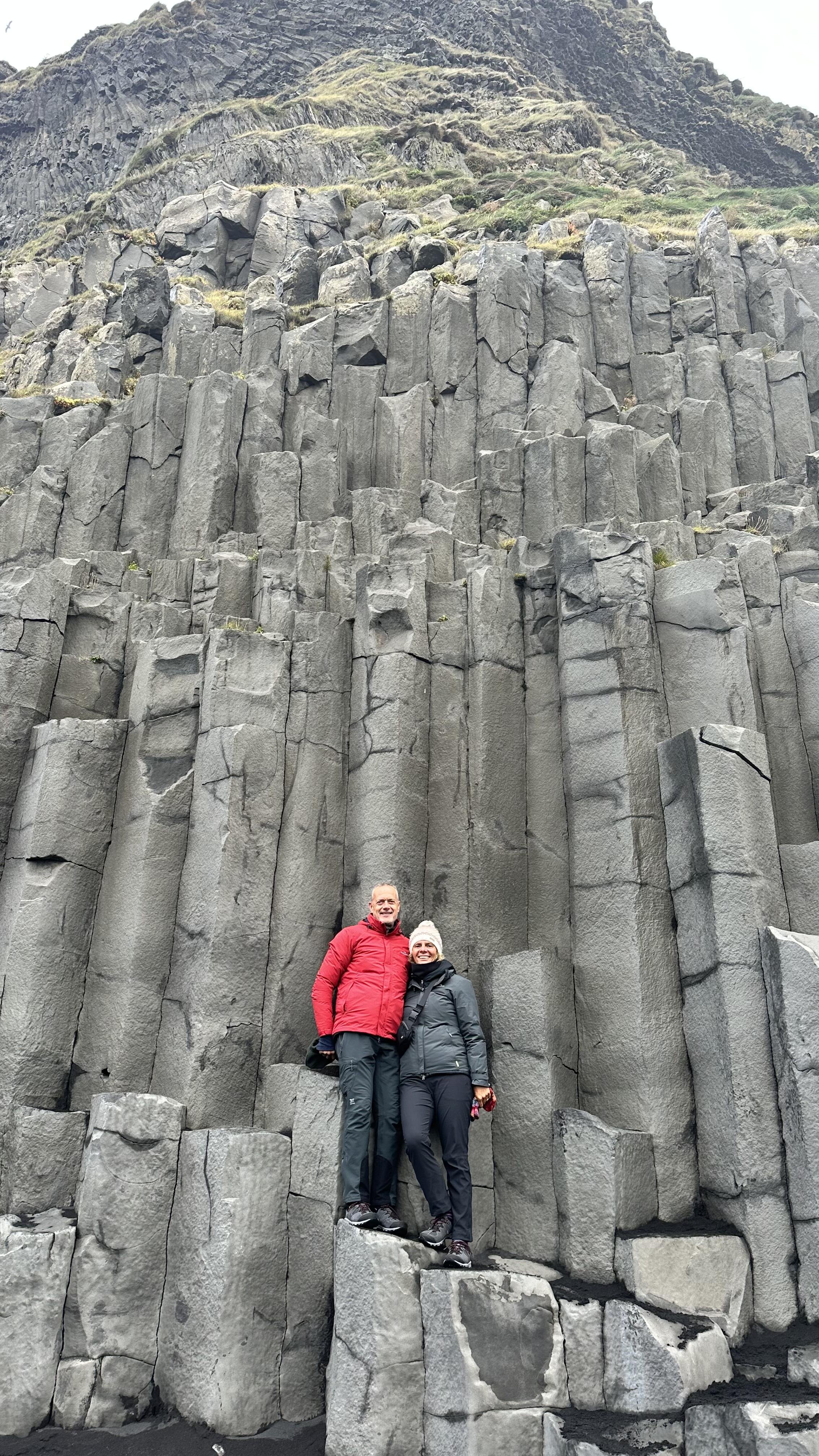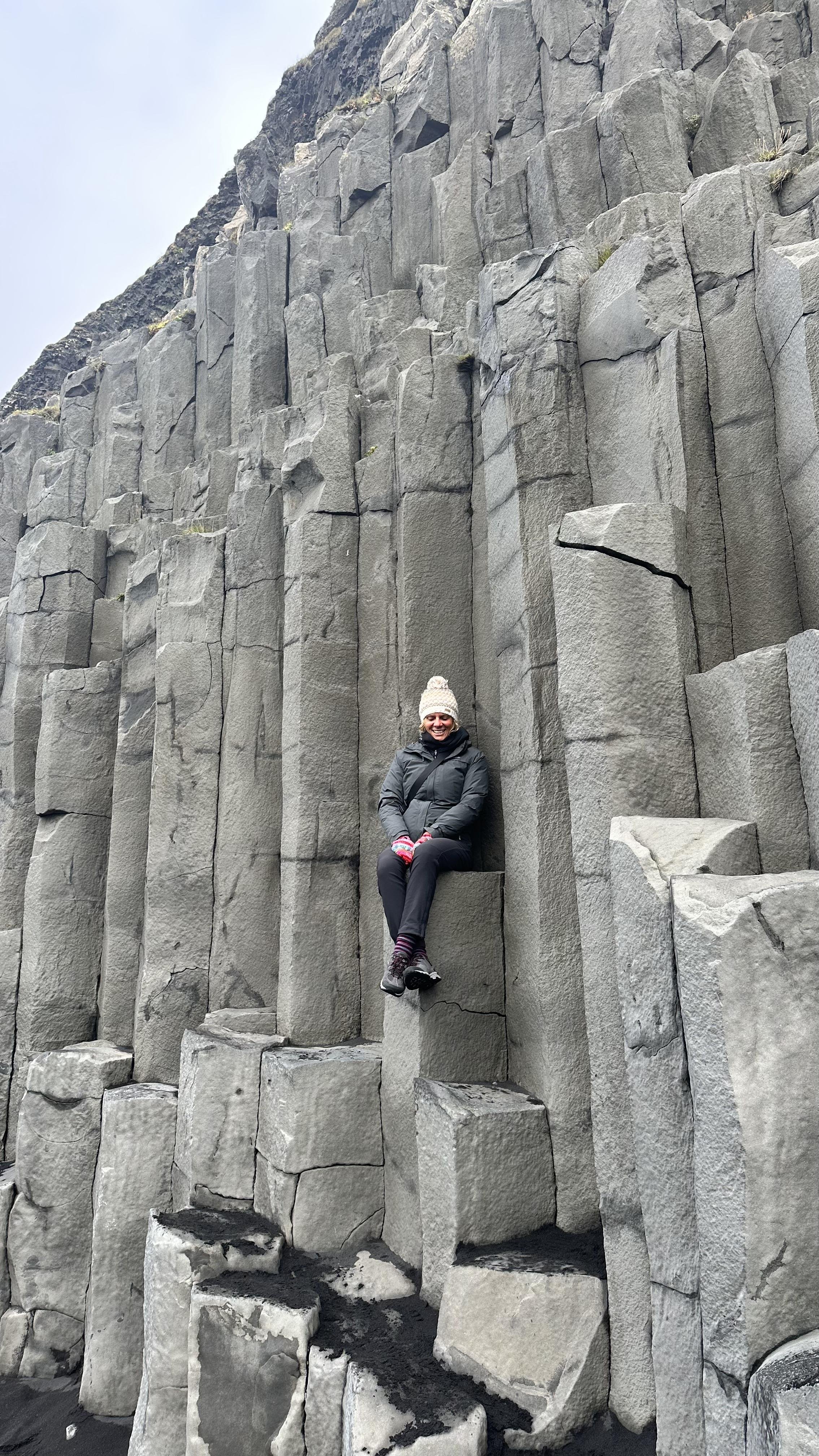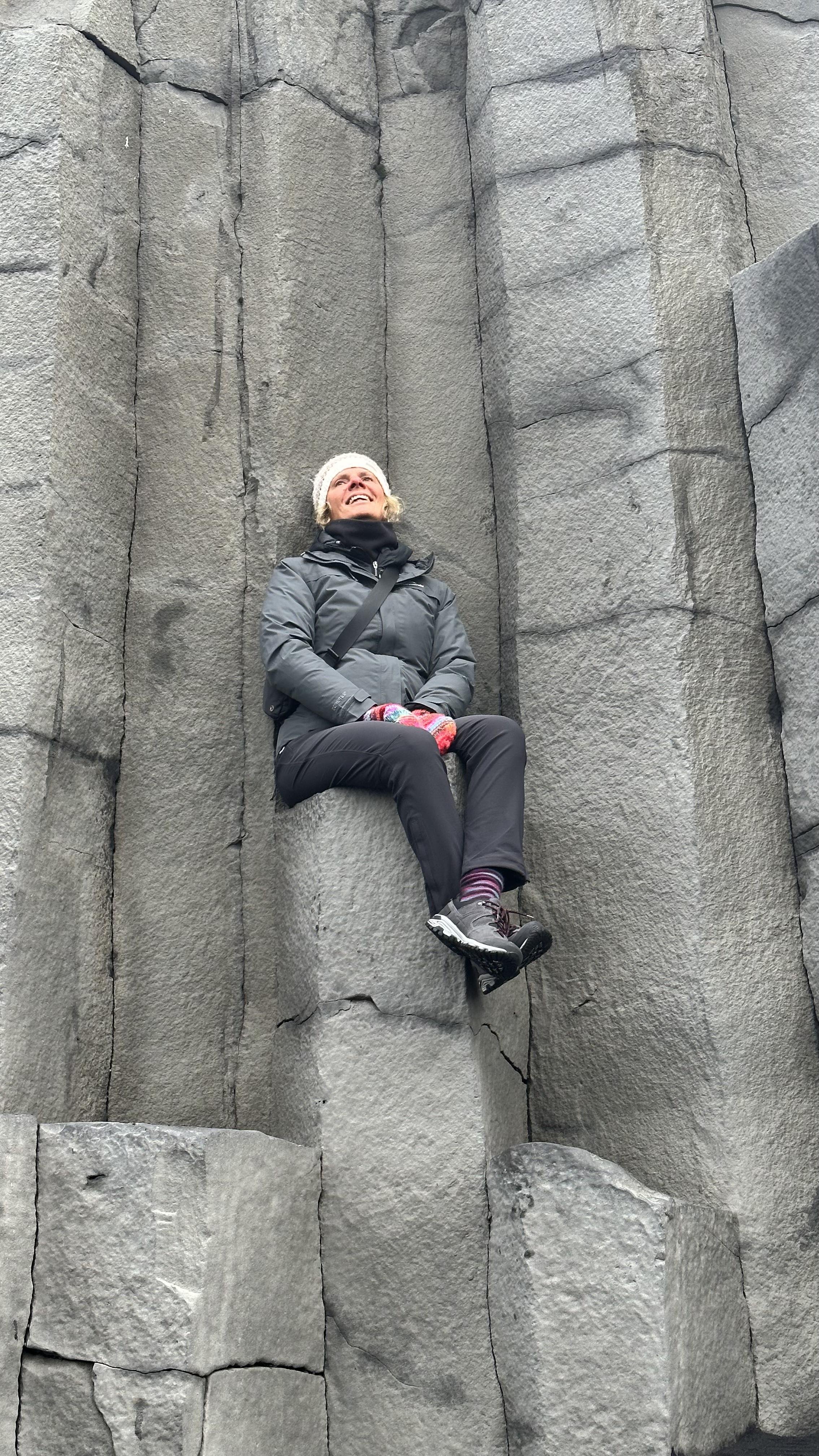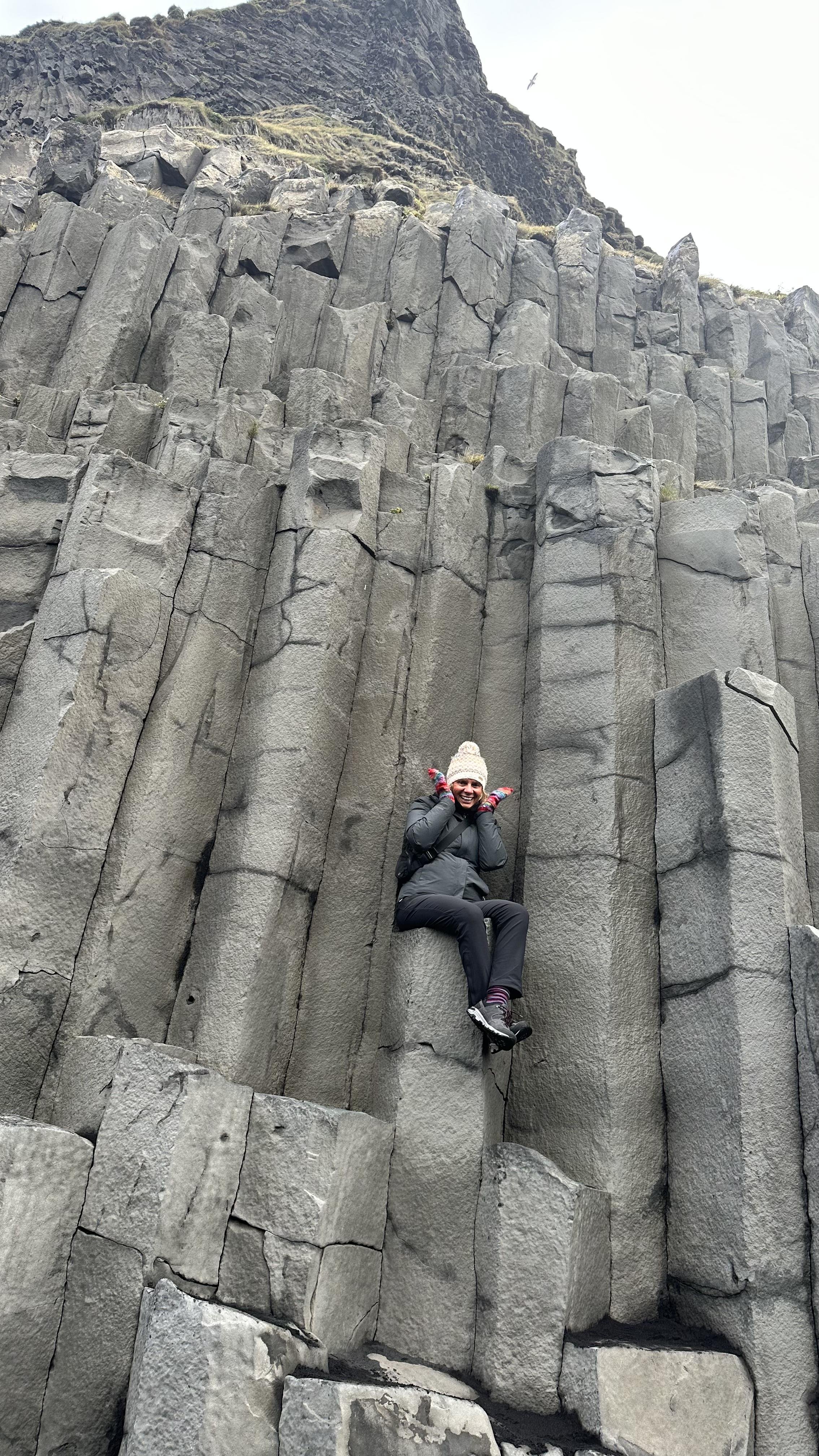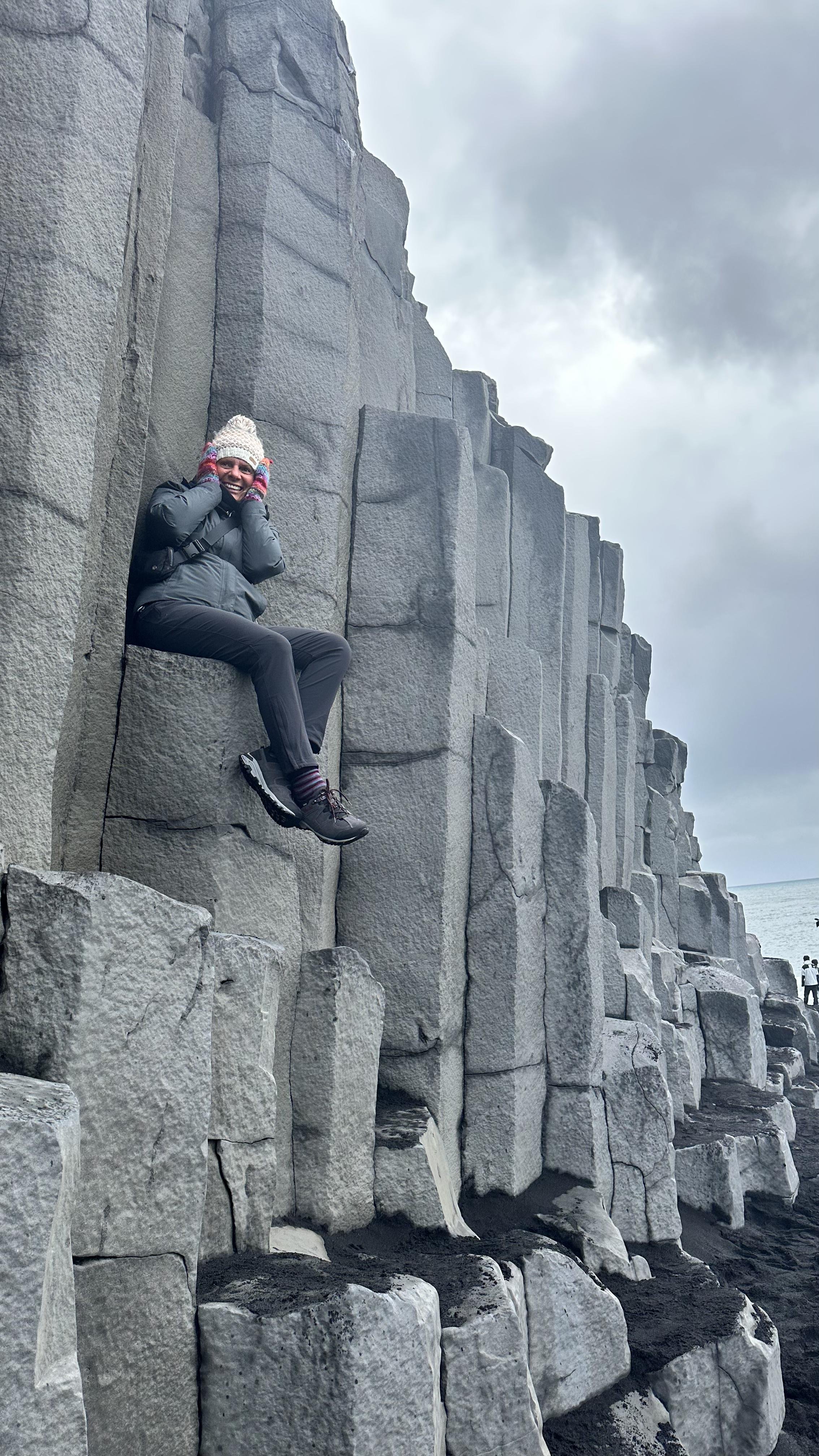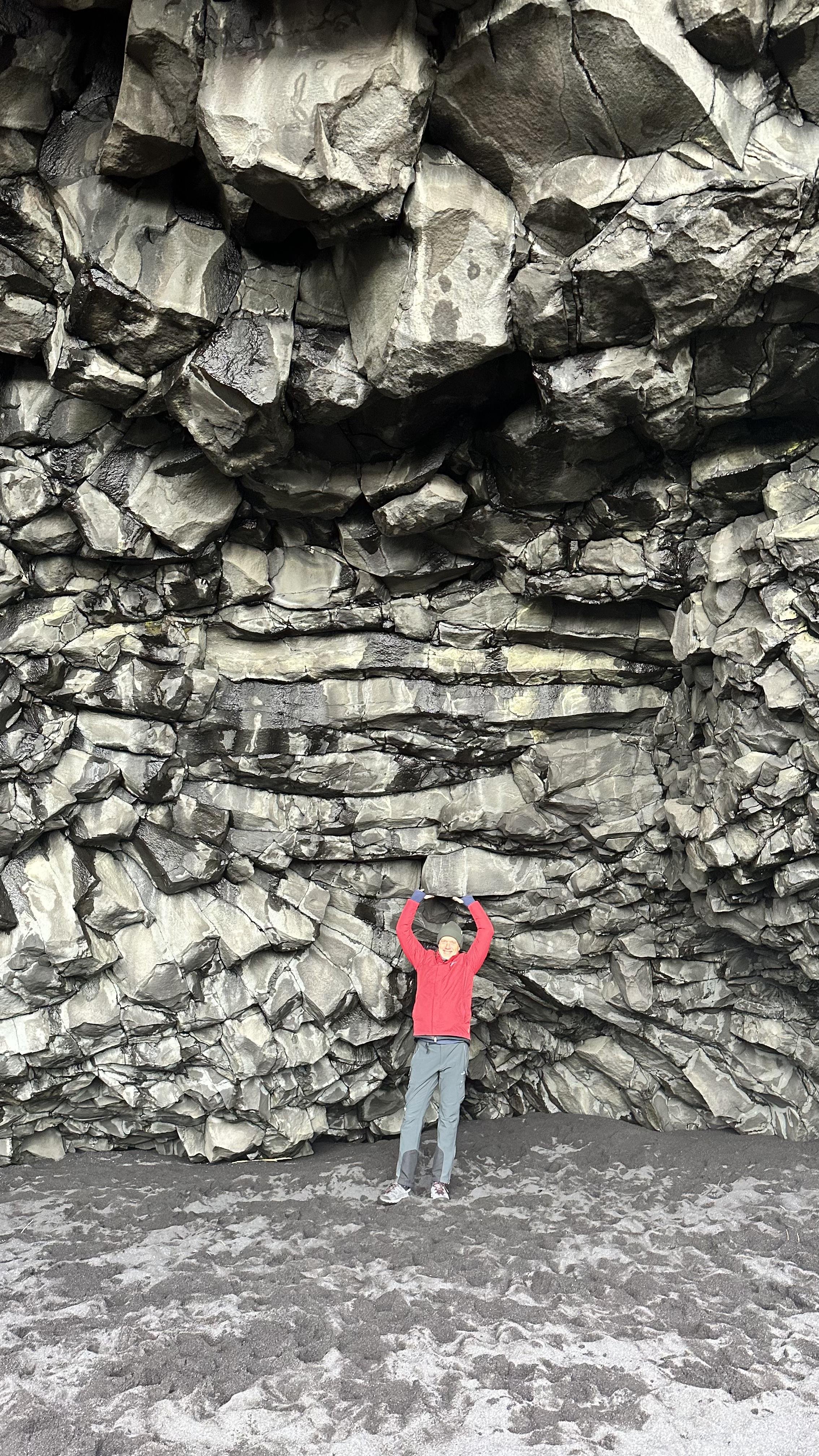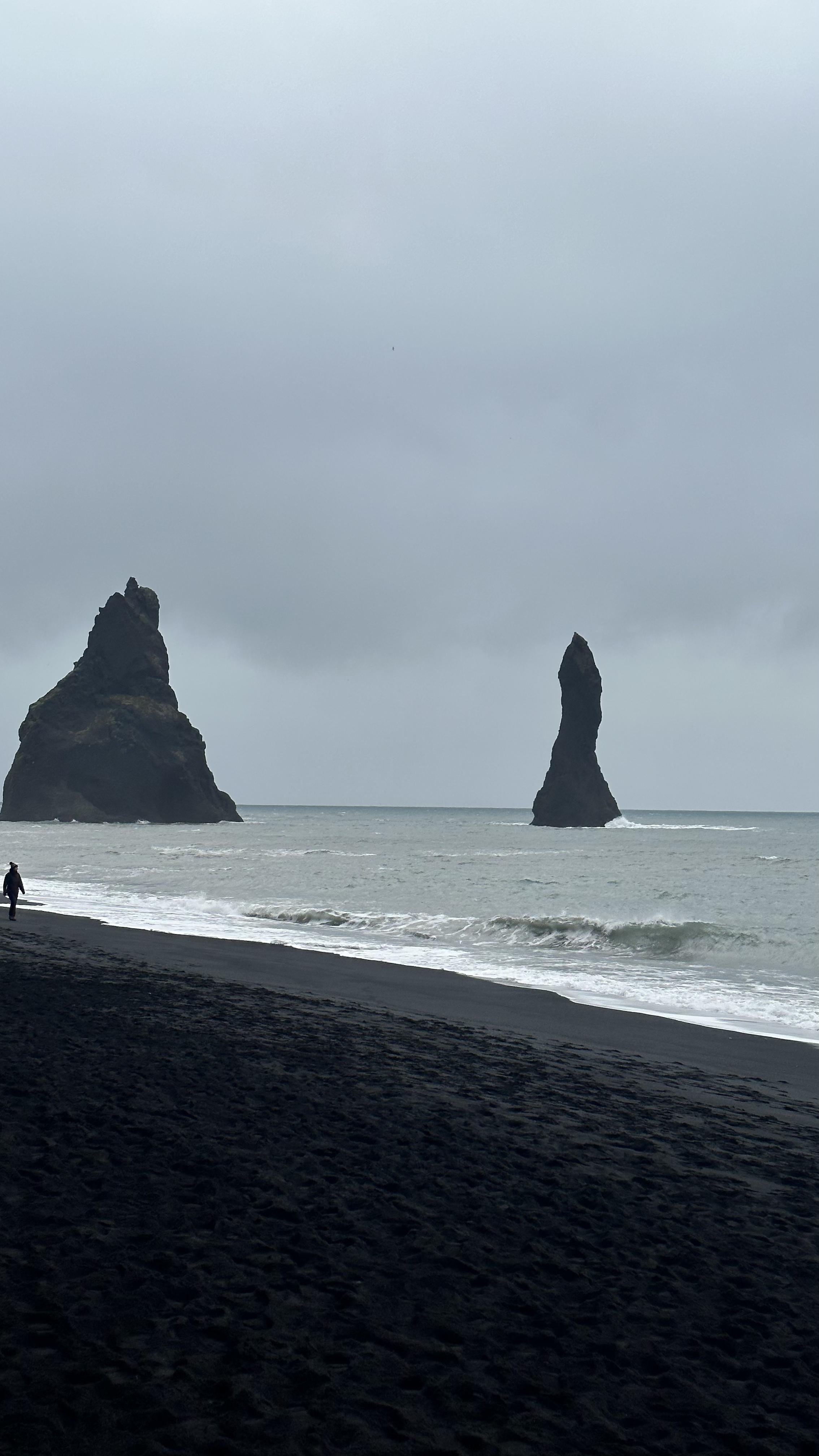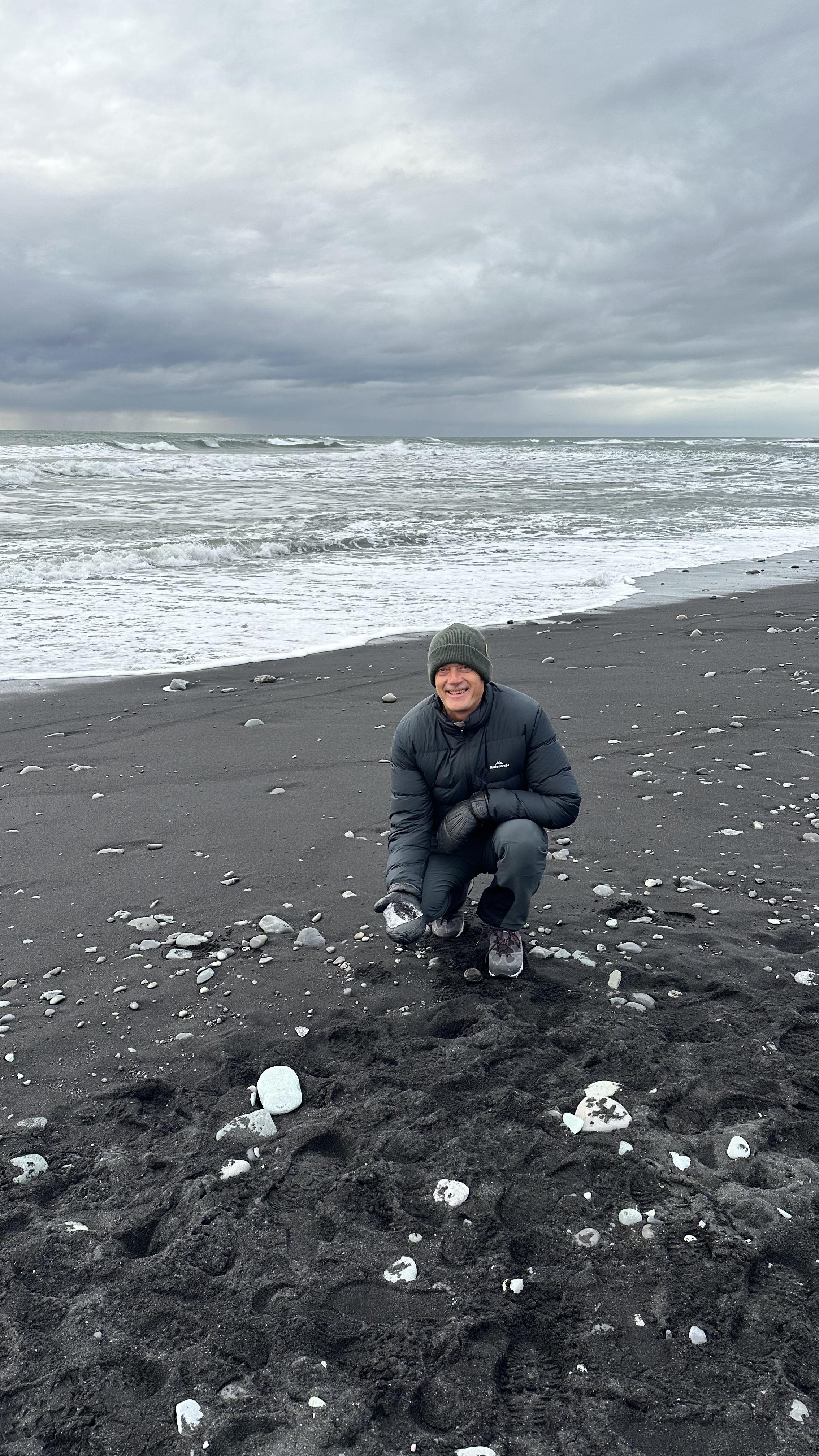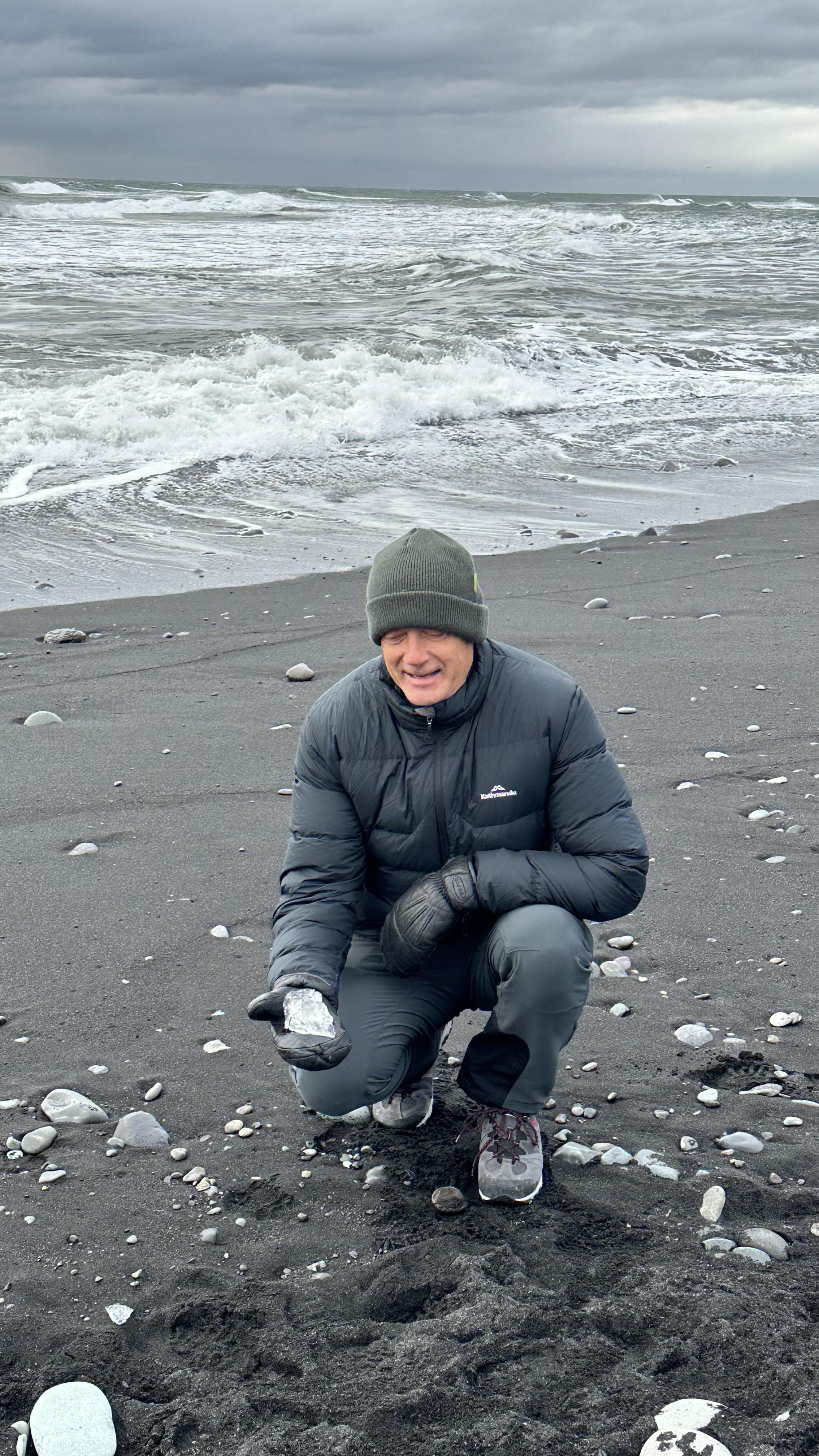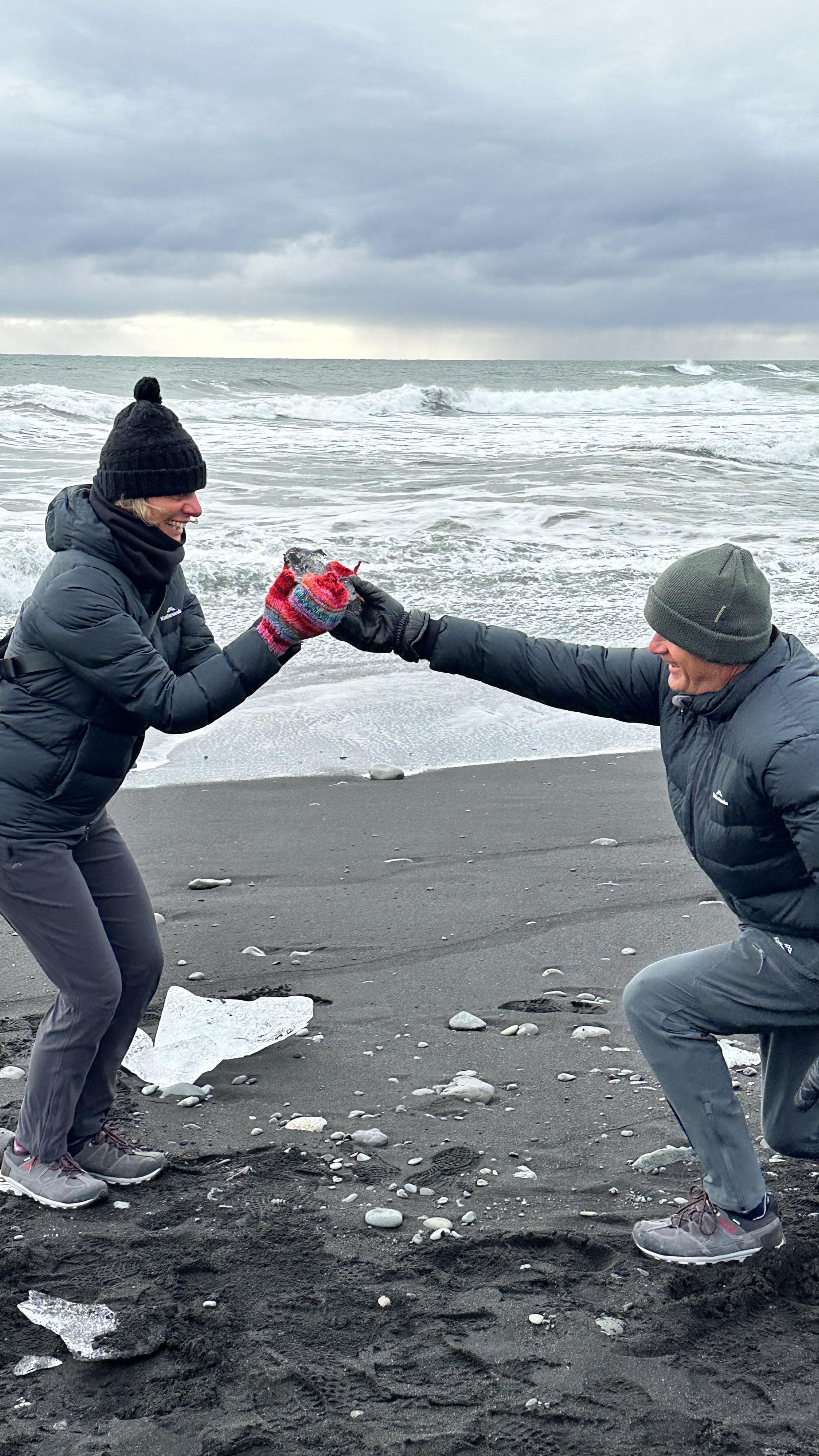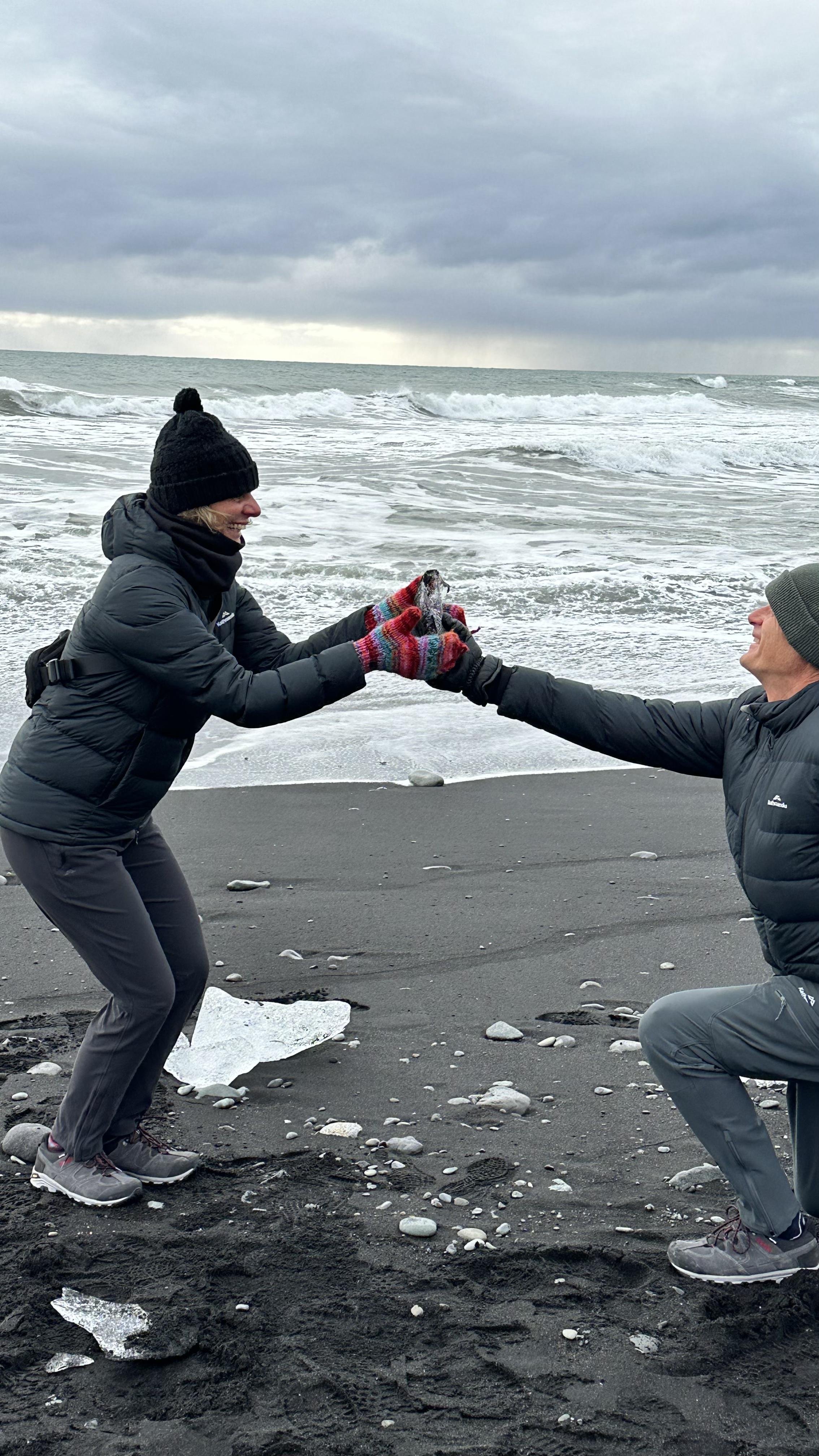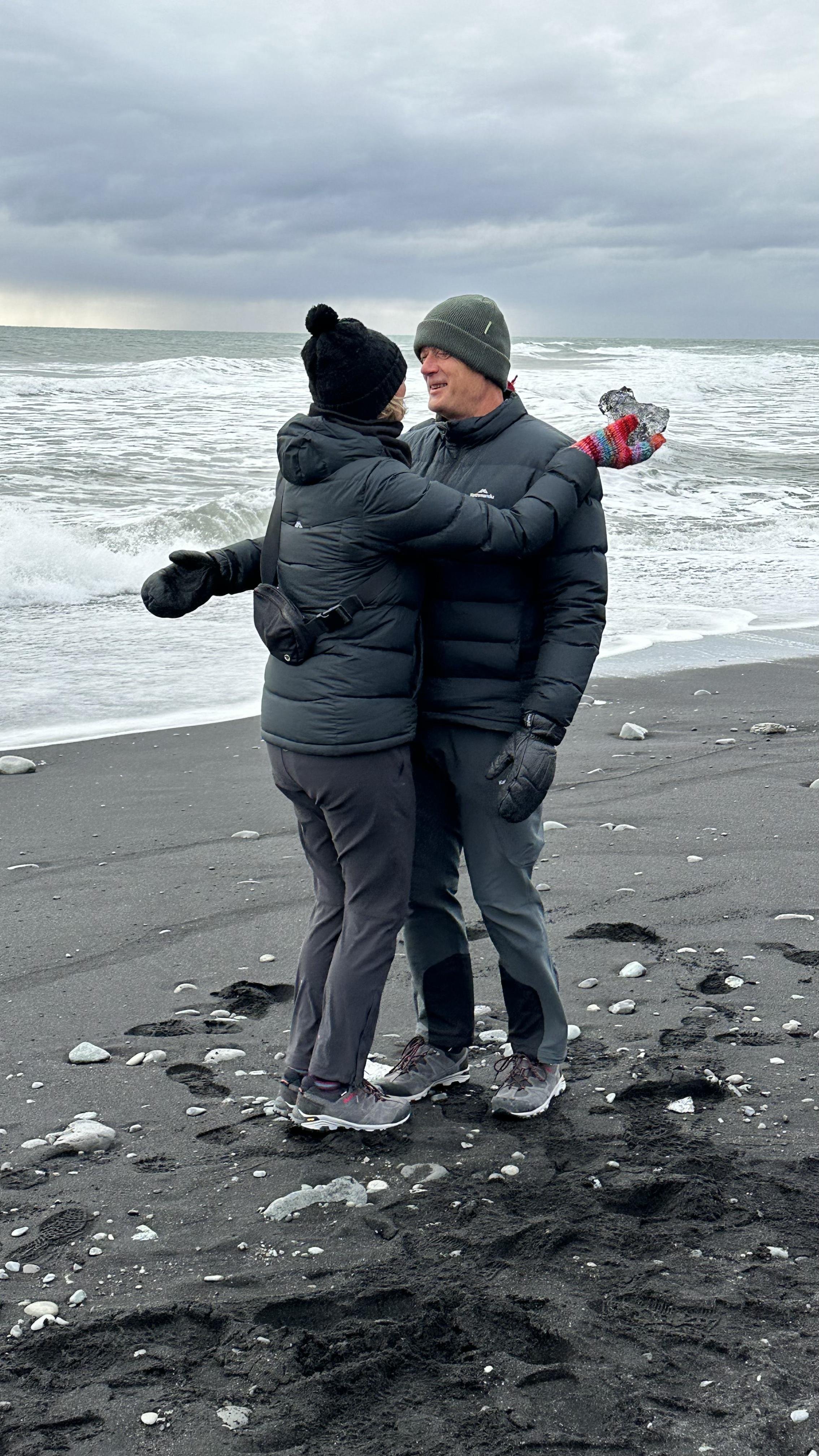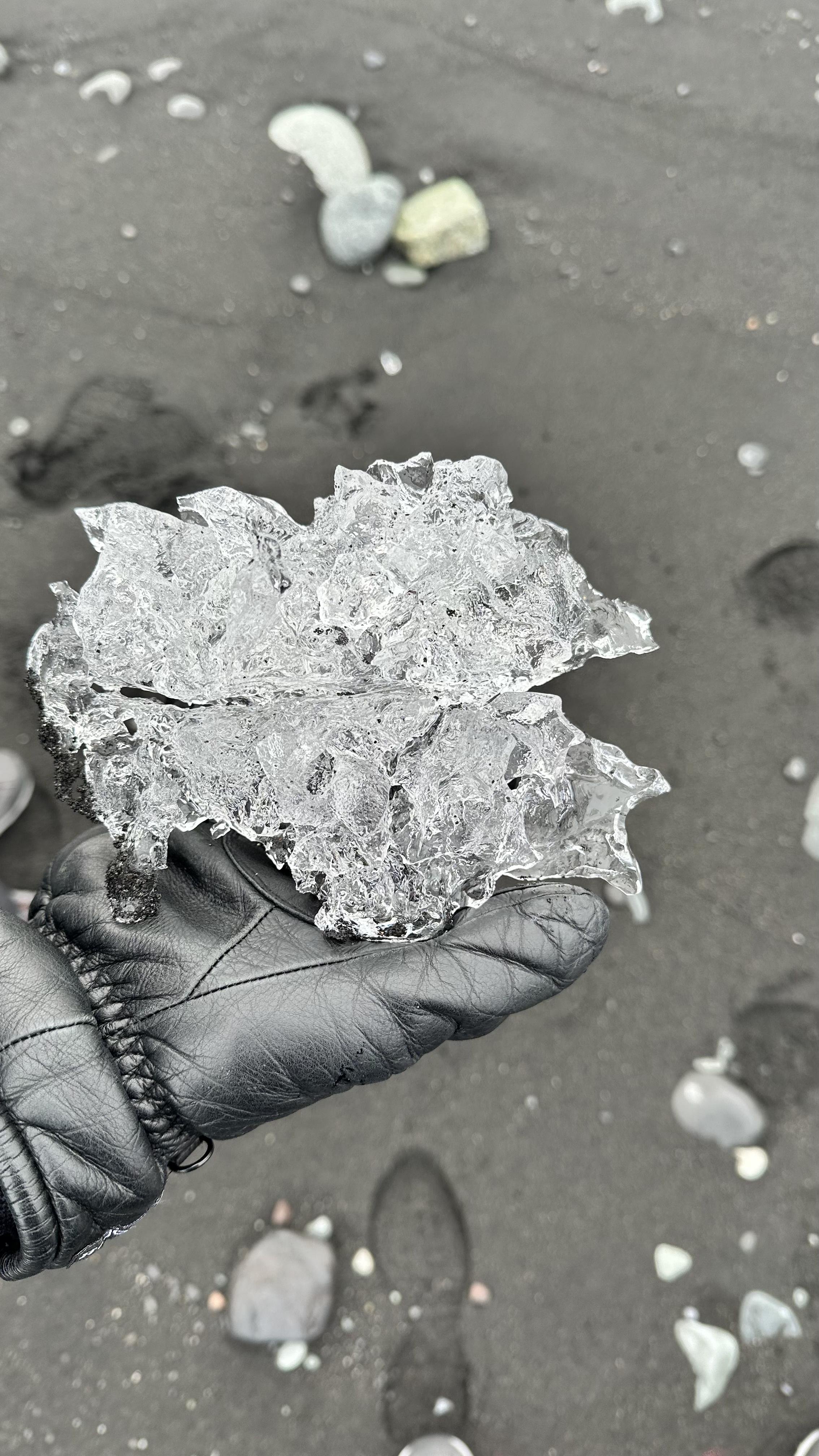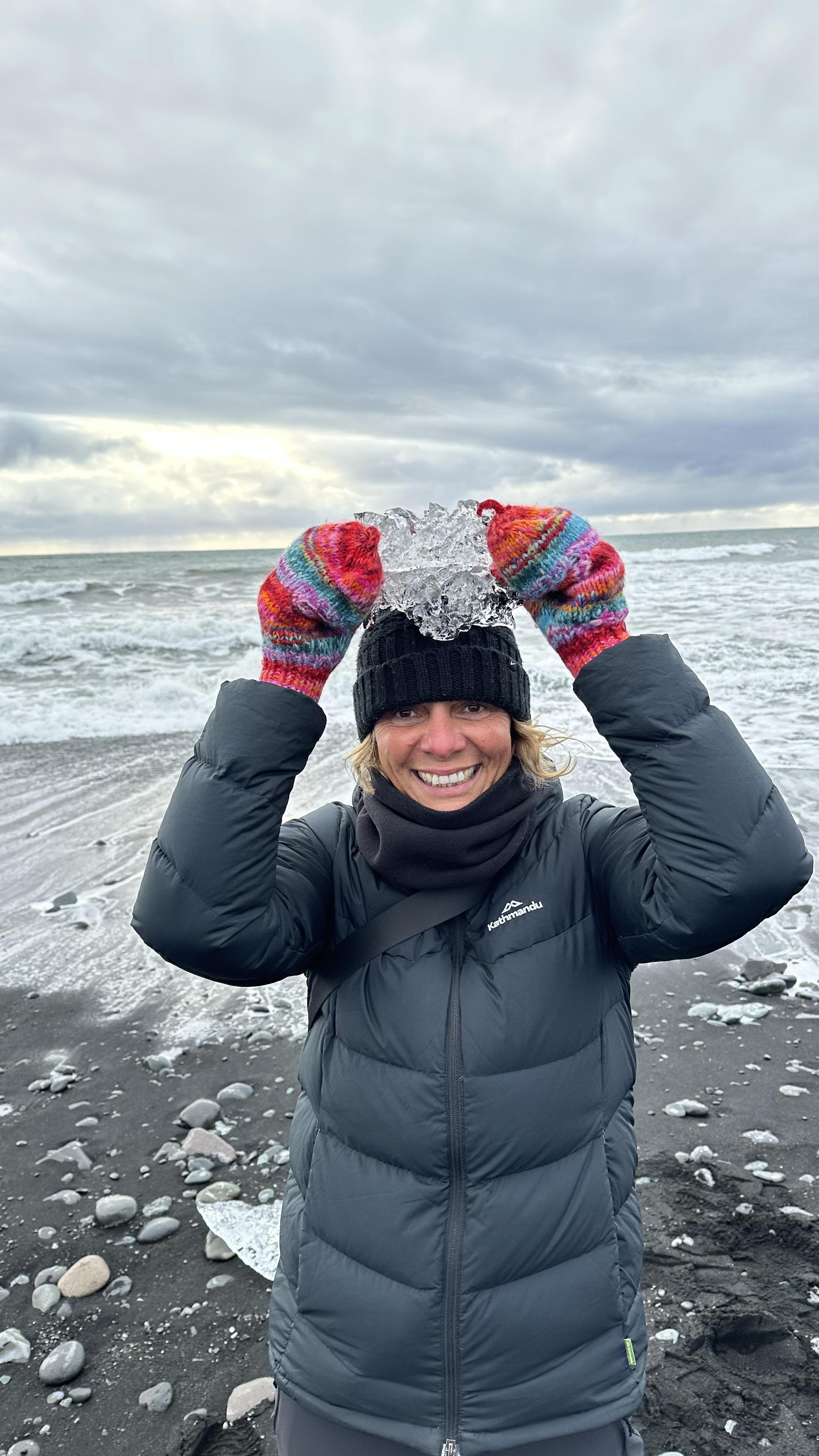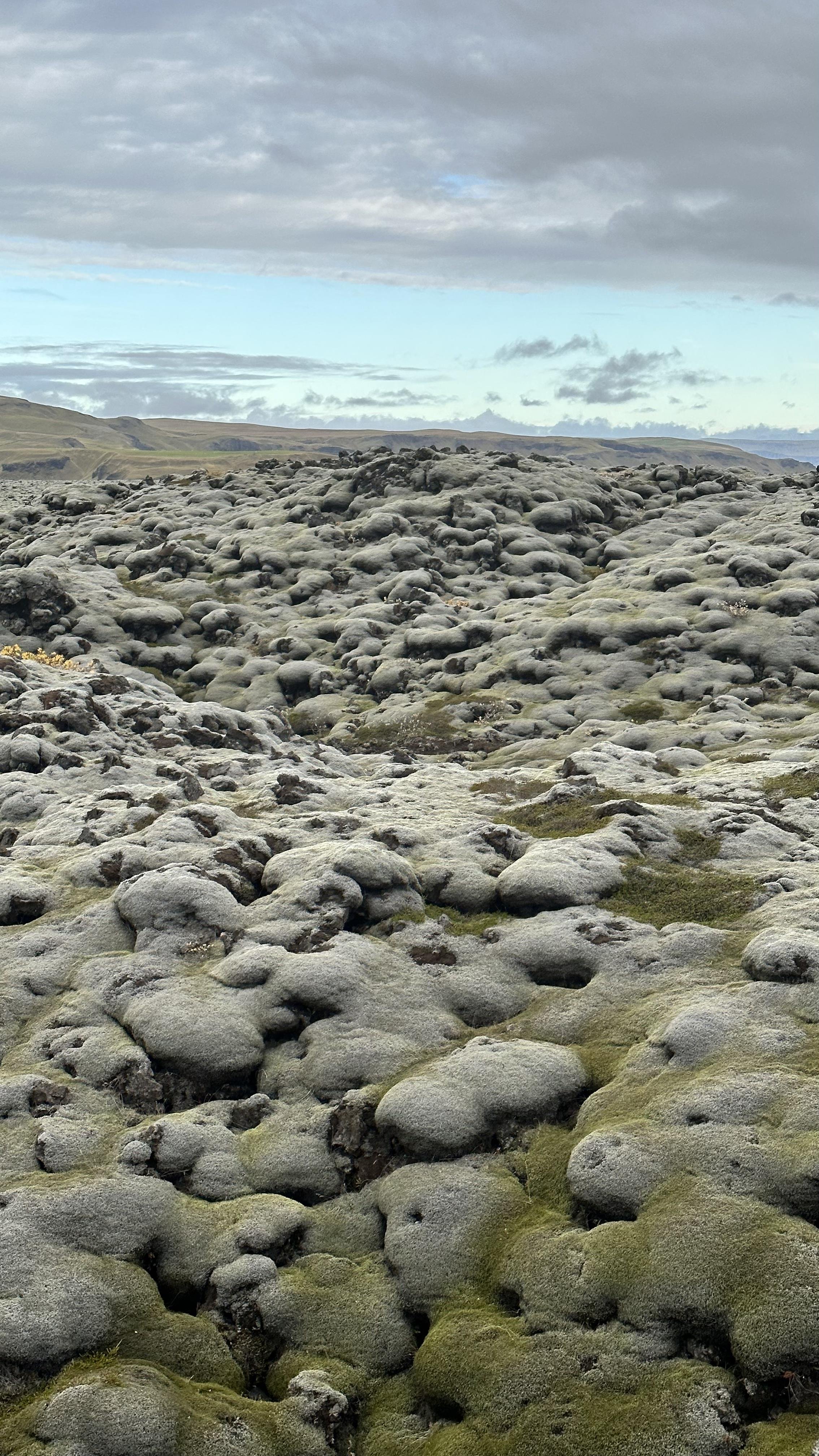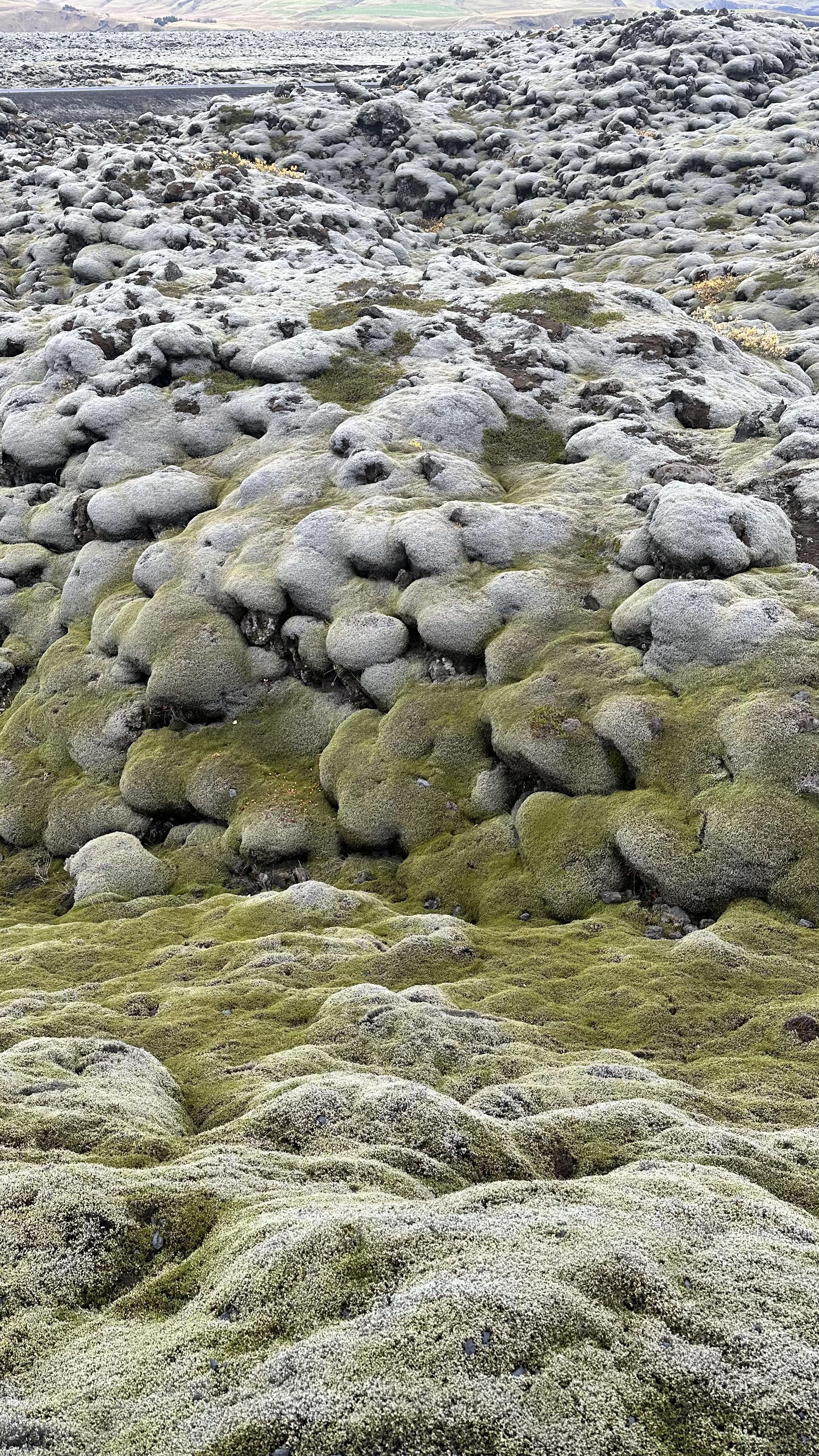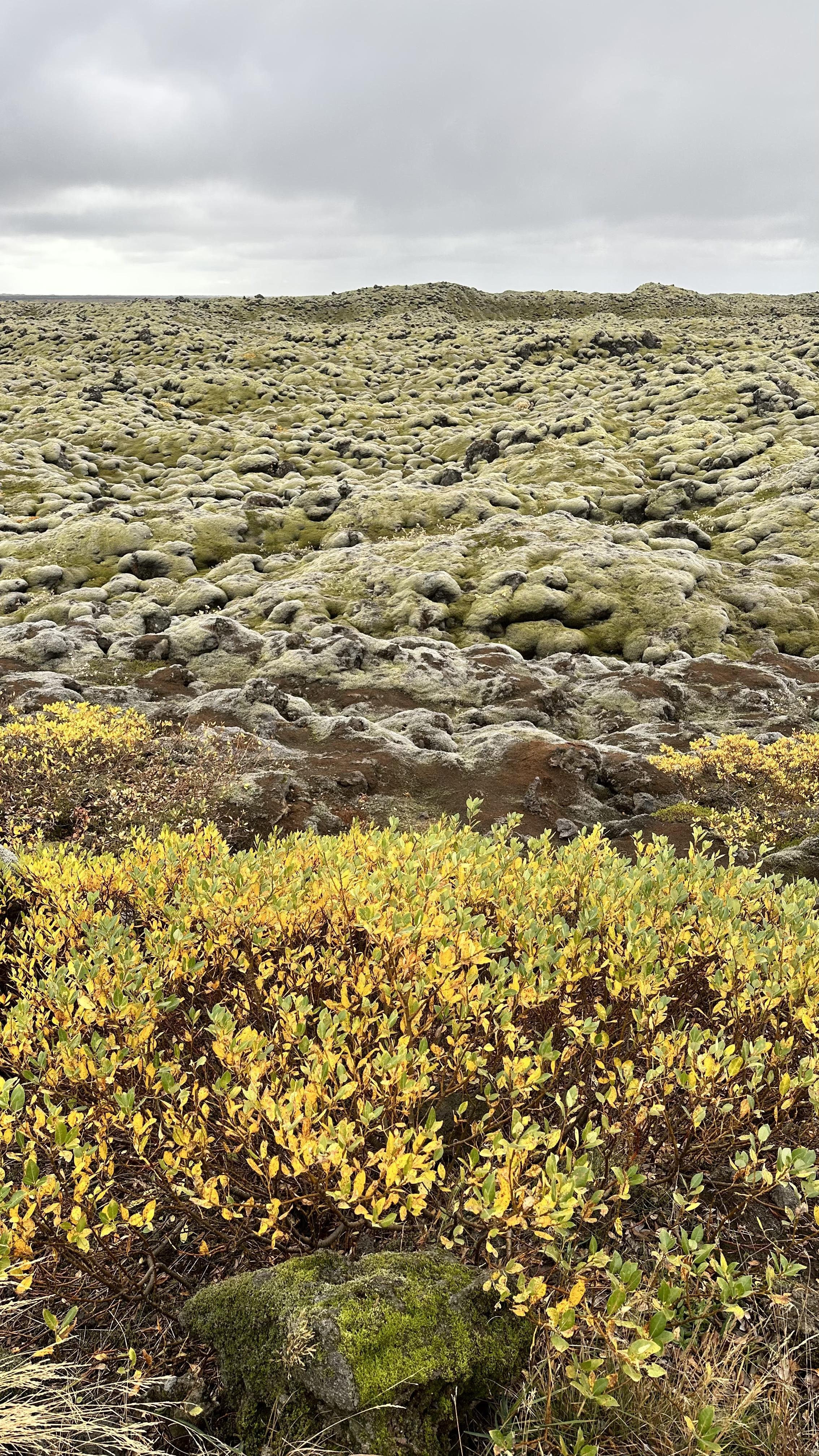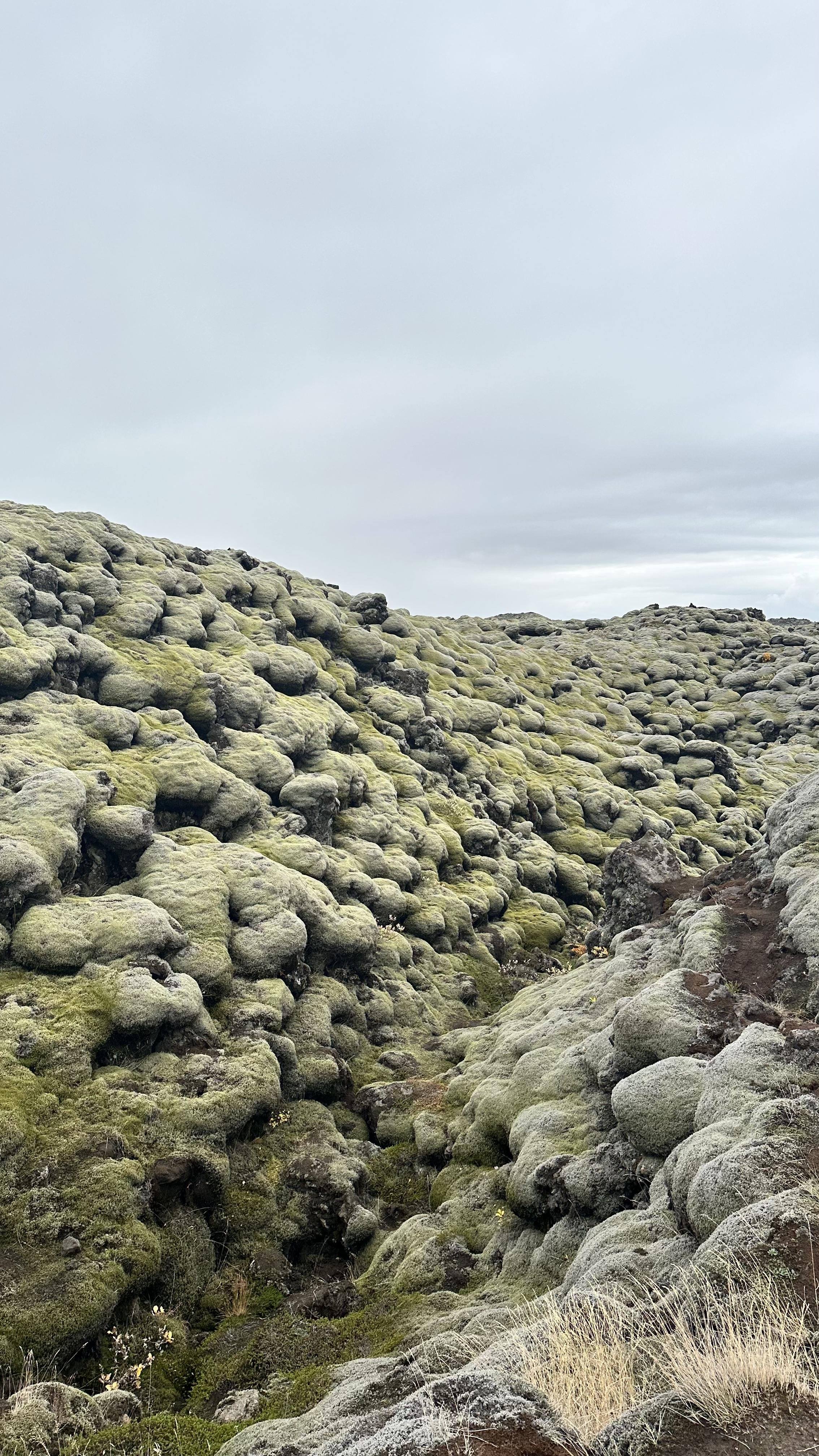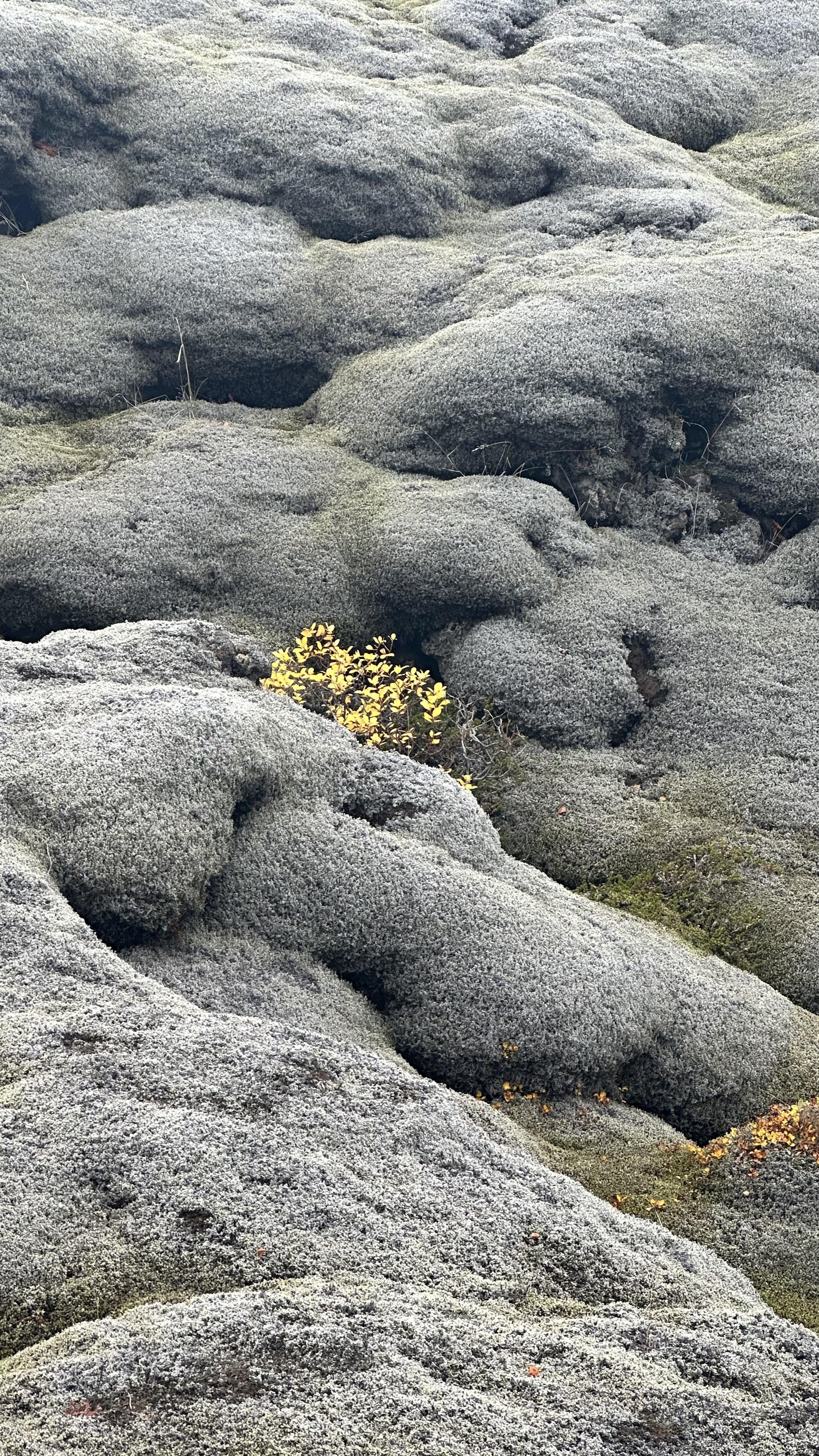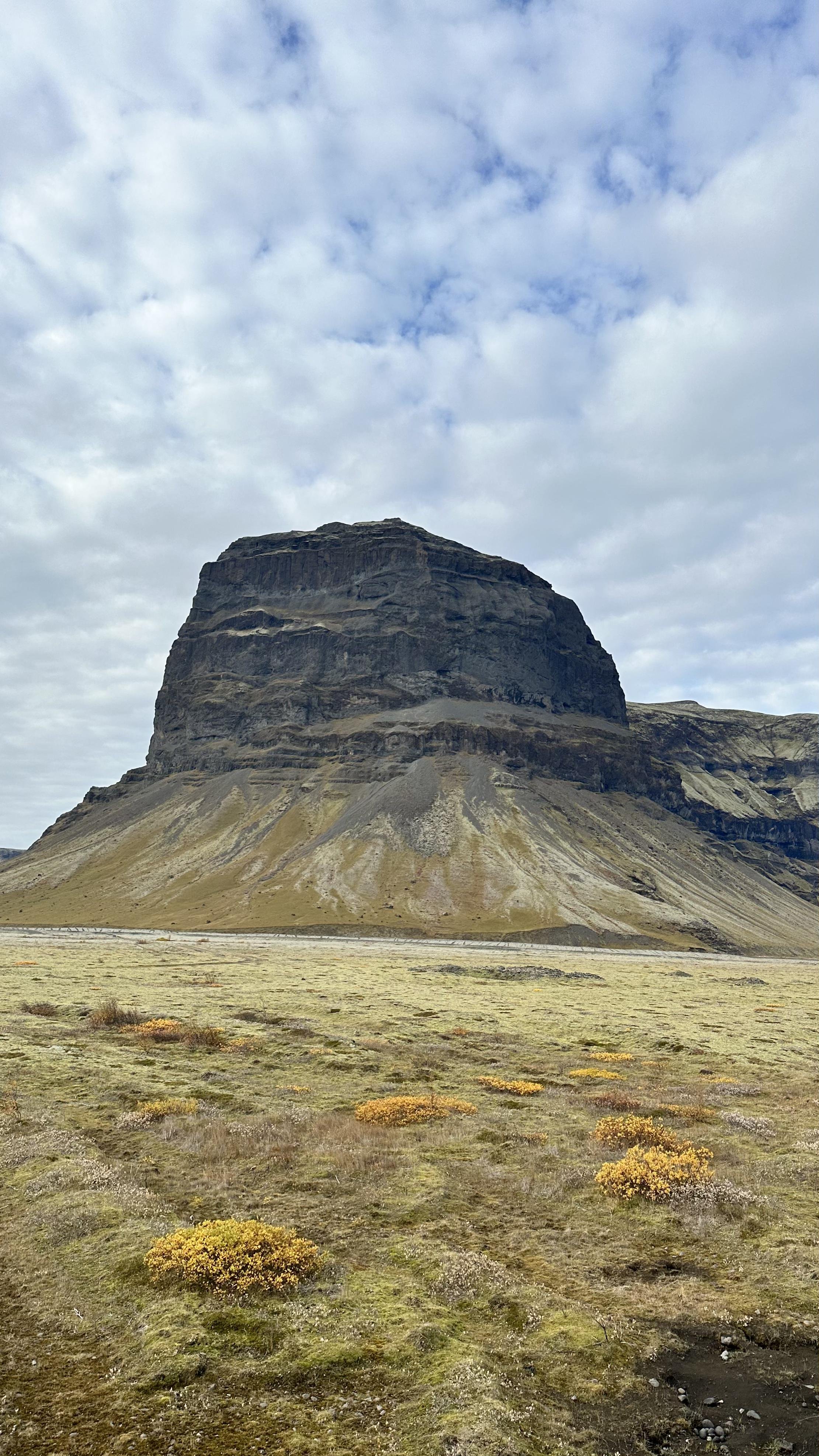The land of Fire and Ice!
Part 2/3
After spending a day on our own exploring Reykjavik we met our fellow travellers, and guess what - every single one is from Australia! I said to Neb, we better make sure New Zealand is well represented on this trip 😉!
Jura from Lithuania is our tour guide and a driver. She came to Iceland as a young linguistics professor, fell in love with the country, its stunning nature, found a man and the rest is history again! She’s been living here for a long time, is fluent in English and Icelandic, is accredited tour guide and very knowledgeable. We learnt quickly that her perspective is a bit different to Mauricio’s since she has assimilated a lot more over the years, certainly something we can relate to.
Intrepid Tour
Day 1
We left Reykjavik at 9am and drove up to the Golden Circle route, a very popular tourist destination in the western Iceland region of Bláskógabyggð.
Our very first stop was at Gluggafoss where “hidden people” gave us a permission to see the most beautiful waterfall. We went underneath the waterfall, it was so cool!
I’ve never done it before, a bit scary, but super exciting!
We continued to Thingvellir National Park, home to the Parliament Plains and location of Iceland’s first parliament. Thingvellir also contains the Silfra fissure, where the North American and Eurasian tectonic plates are slowly pulling apart, 2cm per year, with the edge of the plates now only 5 km apart.
The resulting gap is partly filled with fresh water and is clearly visible. Rift valley sits in between two plates. Absolutely incredible to witness! Everywhere you look at, it looks like a postcard. Autumn is the best artist of all. The nature colours are so so beautiful, the whole place left us speechless.
From there we visited the Geysir geothermal area at Strokkur and watched as the geyser swells with blue water erupted and shoot some 20-30 metres in the air.
Geysir and Strokkur are a couple of erupting hot springs, or geysers in the Haukadalur geothermal field, north of Iceland’s Laugarvatn Lake.
The bigger of the two is Geysir (we get the English word from him, a derivative of an Old Norse word for “gush”), but he’s been a little shy about his star power recently, only spouting off sporadically. Strokkur, on the other hand, can’t contain himself, erupting reliably every 4-7 minutes, every day and night.
From there we were spellbound by the immense beauty and sheer power of the Gullfoss (Golden) double waterfall on the Hvita River. Amazing amazing amazing! This is my favourite waterfall of all we’ve seen in Iceland, and we saw many!
(Foss = waterfall)
With our hearts full of joy and happiness we finished the day at a remote farm in the Hvolsvollur region, for our overnight stop for the night.
I know it’s hard to believe that words ( in my case in particular 😉) are not enough to describe the nature beauty, but honestly I am going to leave to the photos to bring to life the magical world of Iceland. I won’t do it justice, I simply don’t have enough adjectives in my vocabulary!
Fun facts:
Iceland is a volcanic island and on average there are 25 volcanic eruptions per century.
When eruptions happen lava flow takes everything down. Eruptions under glaciers create ash and glacier floods are triggered. The land becomes wasted and nothing can grow on it ever again. These areas are called volcanic deserts.
At the early settlement days 75% of the island was covered by vegetation. In 15 century the climate got colder and lasted to the industrial revolutions. Humans used birch trees to build and heat homes, they brought domestic animals who grazed vegetation and it all changed over the centuries.
At the end of last century they realised what was happening and started planting forests to bring a balance to the eco systems.
Icelandic literature is very popular and well known in the world. Foreign author Hannah Kent wrote a book about the 1830 last execution in Iceland. She collected the evidence and published a book Burial Rites, apparently a great book. It’s in my Kindle library now!
Hot springs v geysers
Hot springs: Pools of hydrothermally heated water.
Geysers: Hot springs with constrictions in their plumbing, which causes them to periodically erupt to release the pressure that builds up.
Underground geothermal water temperature at 1000m depth is 200 degrees!
Trolls
The words tröll or troll and tröllkona refer to all beings which are bigger than humans in some ways and that are malicious to some degree.
In the Icelandic stories that still exist about trolls, these beings are described just as told in the Nordic myths. They are both considered to be taller and stronger than humans in general, dumb and wild and then greedy and ferocious.
When something wrong is done to them, the trolls get furiously upset and try to get revenge in the most cruel way; on the other hand they both thank for good deeds and reward it, and often help humans without being asked to.
J.R.R. Tolkien Lord of the Rings author was inspired by the stories told by an Icelandic girl who was his son’s baby sitter. He would quietly listen to the Icelandic folklore stories which triggered his inspiration for the famous books. I bet you didn’t know this one!
In Iceland, "Northern Lights" refer to the natural phenomenon known as the Aurora Borealis, which is the display of colorful lights in the night sky, primarily in the northern hemisphere. The Northern Lights are caused by the interaction between charged particles from the sun and the Earth's magnetic field. When these charged particles collide with the gases in the Earth's atmosphere, they emit beautiful, luminous colors, creating a dazzling light show.
Iceland is one of the popular destinations for witnessing the Northern Lights due to its location close to the Arctic Circle and its relatively low levels of light pollution. The best time to see the Northern Lights in Iceland is during the winter months, typically from September to April, when the nights are long and dark.
We are still hopeful we’ll see them 🤞
Day 2
The day started with a visit to breathtaking Seljalandsfoss waterfall, followed by Skogafoss waterfall.
At 25-metres wide with a 60-metre drop, this waterfall roars. The cascade of the falls is relatively narrow but falls from a tall cliff that once marked the country's coastline, the sea is now located across a stretch of lowlands and is visible from the site.
You can feel its power up close with a walk up a windy set of stairs up to a stunning viewpoint, for the brave and fit ones - yep that was me 🙌!
Seljalandsfoss waterfall has its origins underneath the glacier Eyjafjallajökull. The volcano beneath this ice cap was the one that erupted in 2010 and caused havoc at airports across Europe. The glacier of Eyjafjallajökull is approximately 100 square kilometers making it the country’s sixth largest. It sits close to the fourth greatest, Mýrdalsjökull which also conceals another notorious volcano, called Katla. Katla is one of Iceland’s most explosive volcanoes. Since settlement, it has erupted, on average, once every fifty years, with the last eruption in 1918. It is long overdue.
While Eyjafjallajökull’s eruption was huge and disruptive, it pales in comparison to the potential of Katla. Far more explosive, and under much thicker ice, an eruption here in unfavourable wind conditions could have worldwide consequences.
From there we crossed the bridge taken down by a glacier flood in 2010 and drove to the famous Black Beach, Reynisfjara. Black sands and bizarre, rectangular basal rock formations / columns were sooooo amazing! We’ve never seen anything like it, a remarkable place. It is of volcanic origin. The ocean here is not very friendly, this is actually the most dangerous beach in the country!
“Sneaker waves” are unpredictable, ocean can look calm, but surface is very unstable and if a sneaker wave hits you will fall in the freezing cold ocean. There were accidents in the past, we were strongly warned not to get close to the water, and yet it looked so calm.
After this amazing place we carried on and stopped to see Lava fields nearby a small village Kirkjubæjarklaustur. There are 600km of lava fields covered by moss, outcome of one of the biggest eruption from 1783.
I didn’t know much about moss, but moss is an interesting vegetation, it has no roots and can grow on the rocks. The hair of the moss acts as its roots. When you step on the moss it kills it and it needs 70 years to regrow and recover! You are told clear and loud - you do not walk on moss in Iceland!
This was so fascinating, again something we never ever seen in our life! I loved this spot, the nature was pretty, but for me it felt we were walking on another planet, it was so surreal! I couldn’t leave this place, made everyone wait for me, I was amazed!
When you think that’s plenty for a day we actually left the best for last! My dream has come to life! Guess what it is??!!
Ever since I was a little girl playing in the snow on Jahorina I had a dream to see an ice cave! Yes, I used to build them while playing in the snow, but of course that was just a childish game. This time though we’ve got to do it, for real!! We got to enter a real ice cave! Yay yay yay 😀
So where was this place?
Our stop was underneath the Vatnajökull ice cap ca. 7700 km2 (and covers cca 8% of Iceland) and is still Europe’s largest ice cap by volume, although it has lost more than 15% of its volume during the last century. It conceals seven active central volcanoes, valleys and glacial troughs.
In recent months they discovered a new ice cave and it was opened for public only 3 days before we arrived! So so lucky!
We parked the bus and took a ride in 4WD off the road to reach the footing of the glacier. We had to put ice spikes on our shoes and we walked across the glacier to reach the ice cave. I was so excited, like a little kid 👧! Let the photos tell you how amazing it was!
This is the highlight of the trip for me! AMAZING and SURREAL! The best day ever, and a lifelong memory for sure!
Fun fact:
Did you know that Atlantic puffins spend most of their lives at sea, but return to land to form breeding colonies during spring and summer? Iceland is one of those colonies, in spring time they come over here for nesting and Iceland is the breeding home for about 60% of the world's Atlantic puffins.
Male birds come first and prepare “apartments” for female birds. If a female bird is late a male puffin will let a different female bird into the apartment, but if the real “wife bird” turns up he’ll take her in, they are kind of very loyal bird, but not very patient!
Day 3
Excitement and fun continued the next morning as we drove to Jökulsárlón Glacier Lagoon. Glacier lagoon is a result of a global warming, as glaciers melt they leave a lake behind. This one is 800 years old, but it started melting in 1930ties.
We jumped on an amphibian boat to sail among the icebergs. These icebergs are huge, and remember we see only 1/10 of its actual size that’s floating. They are white and grey, some even black still covered in ash all these years later, I couldn’t believe it!
The lagoon is 200m deep, icebergs change shape, can flip over, once they are small enough they go under the bridge into the ocean. The actual diamond of ice is see true as it’s developed under water, when it’s left on the surface it turns white as it gets filled with air. And then ash makes it grey or black, this Mother Nature continues to amaze us!
We saw seals sunbathing on the icebergs in their natural habitat, so beautiful.
As much as it’s been fascinating to see it, the sad fact is this is a growing lagoon, the glacier retreats around 300m per year because of the salt water eroding it. Such as life.
From here we headed down to Diamond Beach, where some of the icebergs are washed onto the black sand. Check out the photos to see a surprise! I got proposed again and with a much bigger piece of diamond this time 😉! Thanks darling!
After the fun at the beach we went to Djúpivogur,a small coastal village located on the Búlandsnes peninsula, nestled by the picturesque fjord of Hamarsfjörður in East Iceland. The town has an approximate population of 400 people. Fishing has been the primary engine for Djúpivogur’s economy for centuries. In recent times, the tourism industry has blossomed and a hotel, restaurants, cafés, a campground and shops can all be found in and around the town.
We stopped here for a lunch break and to see yet another waterfall! I have lost count by now! And then it started to snow, yay! We all ran out of the bus to see the snowflakes. Aussie’s and snow ❄️! You can imagine their reactions!
Fun fact - how much of snow do you need to make one centimeters of ice? The correct answer is 20cm of snow! Fascinating, isn’t it?
By now I have to admit that I have fallen in love with this place. I’d love to come here for a year and see the country across different seasons. We saw it during beautiful autumn and so far had amazing weather, but I can only imagine how different it looks like in spring or winter! Ok yes, I can work while living here, it doesn’t have to be a holiday!
And this feeling has brought up the one thing I miss the most while living in New Zealand - the proximity of everything when you live in Europe. Everything is so close by and with a few hundred Euros you can jump from one place to another in a heartbeat. I have to admit I miss it so much, it’s such an appealing fact of life for my soul. Who knows where will this emotion take us, for now it’s simply how I feel ❤️.
And now here are the amazing photos just for you! Grab a cuppa and enjoy!
Photo Album: Vatnajökull Glacier’s Ice Cave




Photo Album: Jökulsárlón Glacier Lagoon













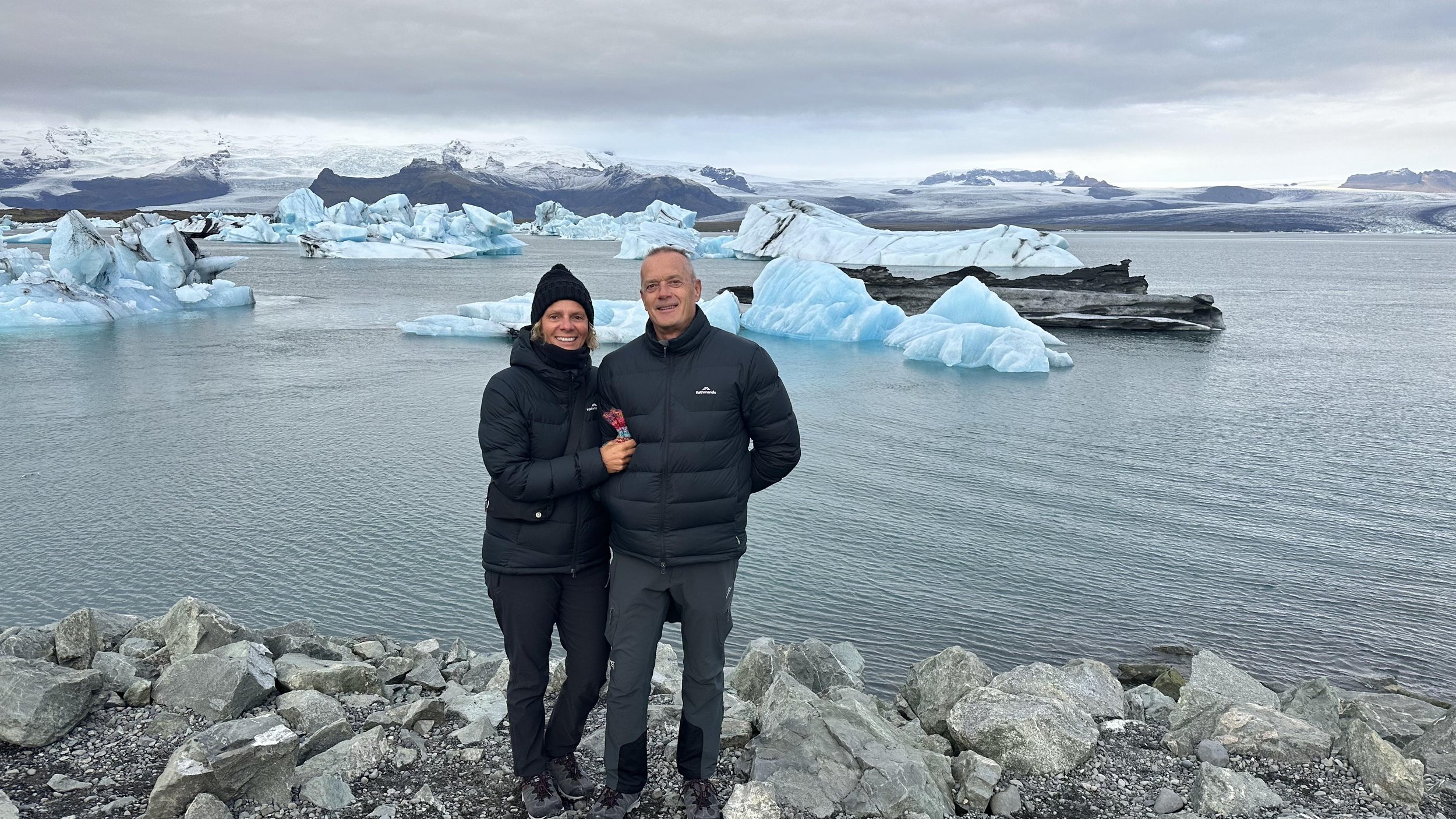
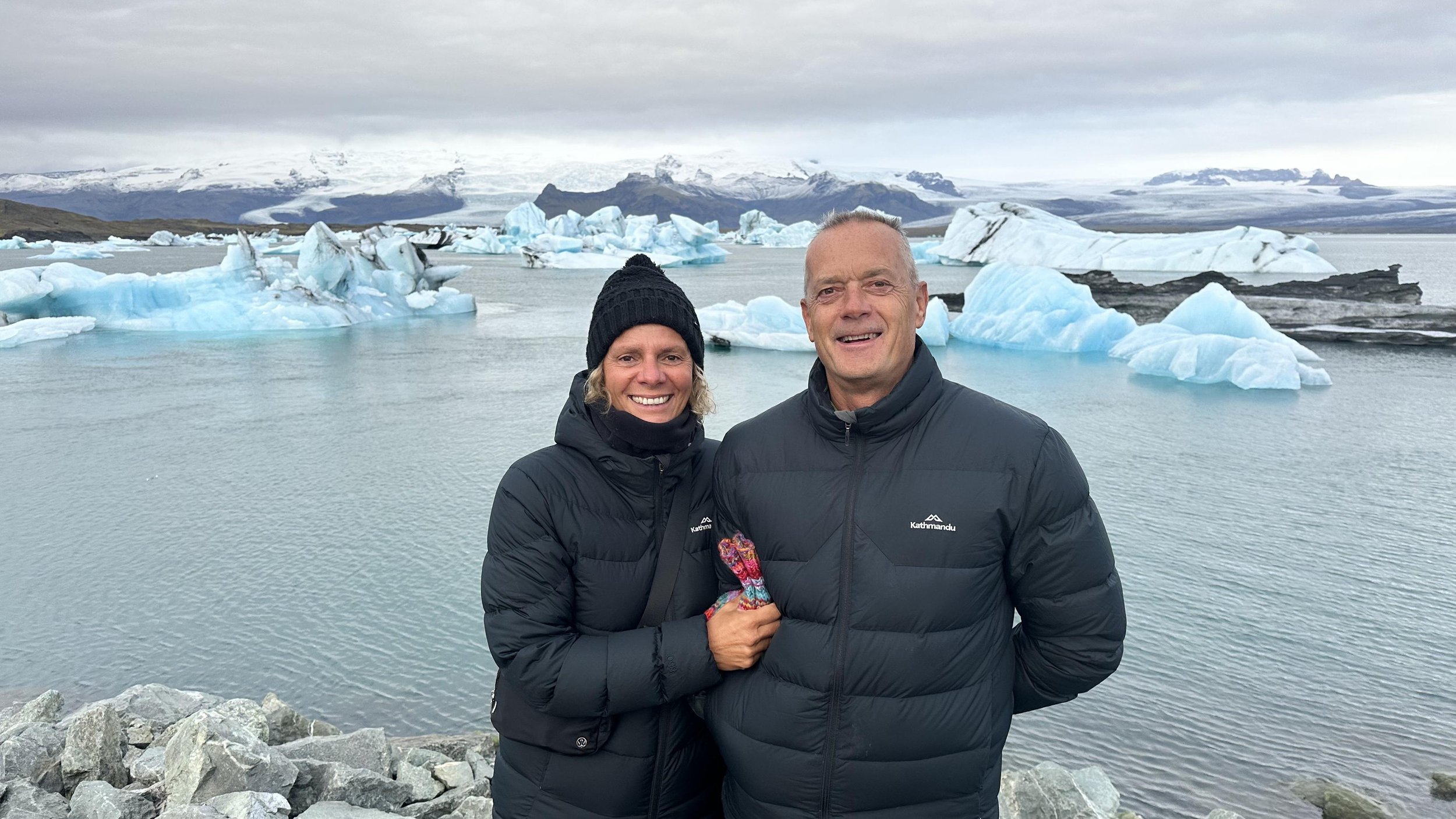
Photo Album: Waterfalls

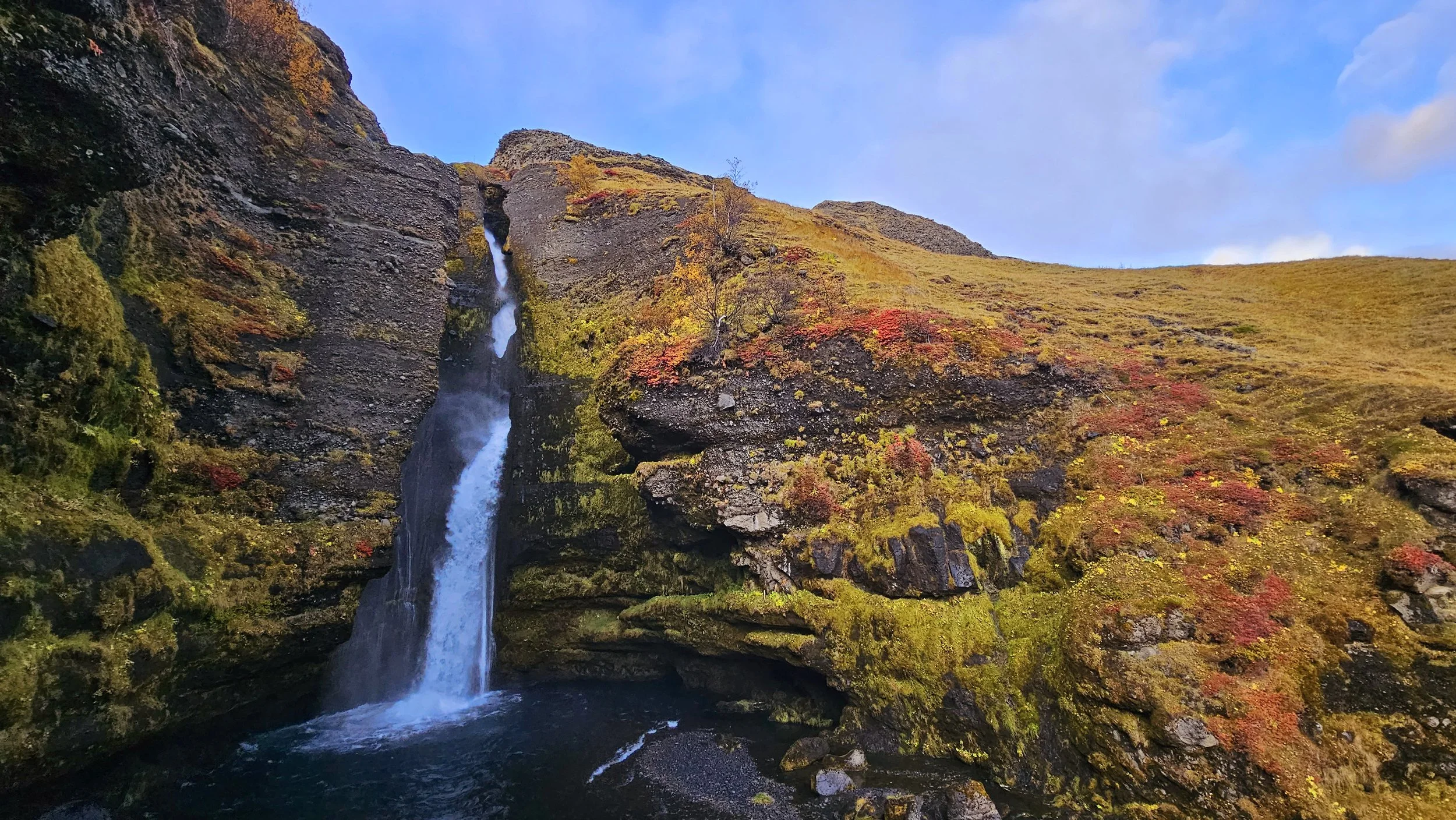

Photo Album: Reynisfjara - Black Beach (Games of Thrones series set)




Photo Album: Diamond Beach Proposal
Photo Album: BEAUTIFUL NATURE: Thingvellir National Park, Silfra fissure (geological fault line), lava fields



























